Few sub-genres of music are as timeless and inventive as the world of synth-pop. One could say that the electronic movement is having a renaissance in 2023—as it seems like every artist working today is experimenting with synthesizers—but I’d argue that the frenzy of synth-pop has barely wavered since catching fire in the late-1970s. There was a lull period after Depeche Mode’s Violator in the 1990s, but the community is stronger than ever.
Obviously, attacking a list of this size in a genre with more blurred lines than others is a tall order—especially when most of the bands on this list have more than one classic record. For the sake of fairness, I’ve opted to only include one album per artist—although songwriters like Haruomi Hosono and Vince Clark are a part of multiple projects included in this ranking. That means some essential releases from New Order, Depeche Mode, OMD, Yellow Magic Orchestra and others were left on the cutting-room floor.
Compiling a list of the greatest synth-pop records is no easy feat, given how many subsets of the sub-genre there are. This time around, we are considering those sonic microcosms—including elements of industrial, electro-pop, techno and house music. There are no straight-up disco records on this list, but a few entries do pull themes from that genre.
As always, this is a subjective list with interpretations of synth-pop that might not align with your own—and that’s fine! It’s the fun that counts, right? Without further ado, here are the 50 greatest synth-pop records of all time, including LPs from Neon Indian, Gary Numan, Chromatics, Fad Gadget, the 1975, Soft Cell and more.
50. The Knife: Deep Cuts (2003)
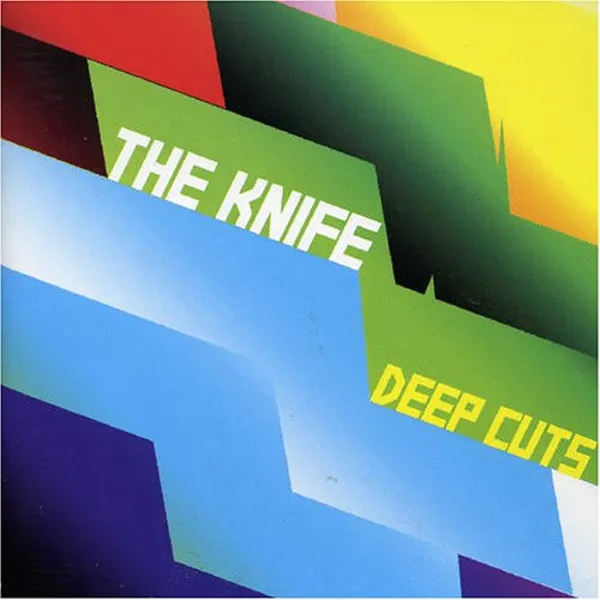 Though the Swedish electronic duo The Knife no longer work together, their 2003 breakthrough album Deep Cuts remains an eternal synth- and electro-pop project. The fact it was only the duo’s second record together is mind-boggling. Not only is it one of the best Swedish albums ever, but it’s a touchstone of post-Y2K synth-pop that parodies the retro inclinations of the duo’s contemporaries. The energy on Deep Cuts sings loudly, especially across tracks like “Pass This On” and “You Take My Breath Away.” The song “Heartbeats” was later made infamous by José González, whose subdued folk cover would deliver the song to new audiences in 2006. However, Deep Cuts on its own is a symbolic, perfect electronic record. The Knife would probably hate the commercialism of being placed on a list like this, but we can’t let their greatness go unchecked. Deep Cuts changed the game forever.
Though the Swedish electronic duo The Knife no longer work together, their 2003 breakthrough album Deep Cuts remains an eternal synth- and electro-pop project. The fact it was only the duo’s second record together is mind-boggling. Not only is it one of the best Swedish albums ever, but it’s a touchstone of post-Y2K synth-pop that parodies the retro inclinations of the duo’s contemporaries. The energy on Deep Cuts sings loudly, especially across tracks like “Pass This On” and “You Take My Breath Away.” The song “Heartbeats” was later made infamous by José González, whose subdued folk cover would deliver the song to new audiences in 2006. However, Deep Cuts on its own is a symbolic, perfect electronic record. The Knife would probably hate the commercialism of being placed on a list like this, but we can’t let their greatness go unchecked. Deep Cuts changed the game forever.49. Neon Indian: Vega Intl. Night School (2015)
 When Alan Palomo quit making chillwave and pivoted to synth-pop in 2015, the world of Neon Indian was never going to be the same. The last album he made for his beloved project, Vega Intl. Night School is a terrific, tight and poised slice of dance music. Never before had Palomo made such a concise masterpiece, yet Vega Intl. was a mold-breaker at a time when synth-pop was nearly on the downslope. The wave of Passion Pit and MGMT had slowly started to dissipate, but songs like “Annie,” “Slumlord” and “Dear Skorpio Magazine” pair electric riffs with distorted, glitzy keyboards. If Vega Intl. Night School was Palomo’s final offering under the Neon Indian moniker, it’s pretty top-drawer to go out with a masterpiece.
When Alan Palomo quit making chillwave and pivoted to synth-pop in 2015, the world of Neon Indian was never going to be the same. The last album he made for his beloved project, Vega Intl. Night School is a terrific, tight and poised slice of dance music. Never before had Palomo made such a concise masterpiece, yet Vega Intl. was a mold-breaker at a time when synth-pop was nearly on the downslope. The wave of Passion Pit and MGMT had slowly started to dissipate, but songs like “Annie,” “Slumlord” and “Dear Skorpio Magazine” pair electric riffs with distorted, glitzy keyboards. If Vega Intl. Night School was Palomo’s final offering under the Neon Indian moniker, it’s pretty top-drawer to go out with a masterpiece. 48. Future Islands: Singles (2014)
 Some of the coolest records of the last 15 years have been made by Baltimore pop-rockers Future Islands—but none have conjured such a buoyant, irresistible charm like their 2014 LP Singles. On the backs of songs like “Seasons (Waiting On You),” “Sun in the Morning” and “Fall From Grace,” the quartet made their fourth album an absolute mega-banger. Samuel T. Herring proved himself to be one of the best frontmen in the business, and Singles is the synth-pop masterpiece of your dreams as it combines new wave riffs and indie backbeats and some guttural howls. It’s magnetic and enchanting. Future Islands haven’t made an album since 2020, but their impact on pop music has been cemented for nearly a decade.
Some of the coolest records of the last 15 years have been made by Baltimore pop-rockers Future Islands—but none have conjured such a buoyant, irresistible charm like their 2014 LP Singles. On the backs of songs like “Seasons (Waiting On You),” “Sun in the Morning” and “Fall From Grace,” the quartet made their fourth album an absolute mega-banger. Samuel T. Herring proved himself to be one of the best frontmen in the business, and Singles is the synth-pop masterpiece of your dreams as it combines new wave riffs and indie backbeats and some guttural howls. It’s magnetic and enchanting. Future Islands haven’t made an album since 2020, but their impact on pop music has been cemented for nearly a decade.47. Suicide: Suicide (1977)
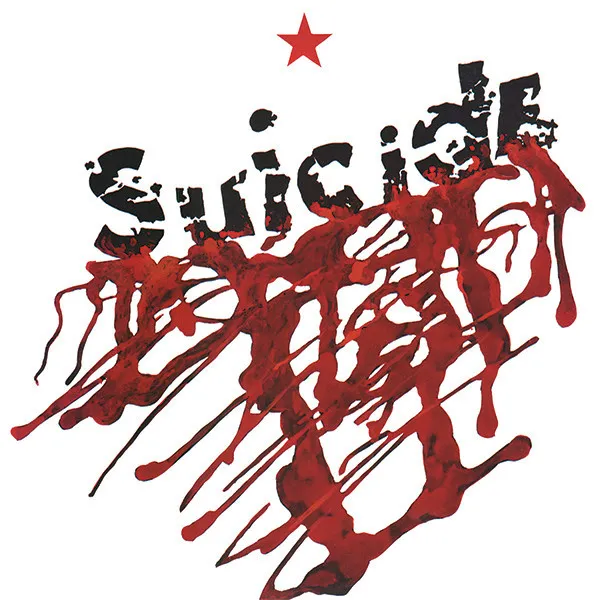 Suicide’s debut album is, arguably, the biggest outlier on this list—given that it blurs the line between pop and punk so deftly. But, at its core, it is a pop-inspired, synthesizer-laden rock record of ambitious proportions. There are many industrial elements on Suicide that might evoke some of the more avant-garde work by Cabaret Voltaire, but Suicide’s bread and butter from the jump was making soundscapes as sparse and set adrift by blinking fits of gauzy keyboard arrangements as possible. For every chart-topping synth-pop feat, the sub-genre became balanced by something a bit more subdued and brash—and you have to acknowledge both the mainstream and the subversive. Suicide knew how to play into their own bubble, as if they’d found a way to merge minimalistic disco with the deepest caverns of Lou Reed’s mind. Sometimes, the album’s hollowed-out pastoral teeters on silliness, but it’s hard to look away from Suicide’s own monotone eccentricities. The band would venture into the deep, abrasive waters of punk rock in more steadfast ways after their debut, but it’s on that seven-track first chapter where they really leaned into droning, primitive rhythms and aching organs. Suicide didn’t chart, but it’s an irreplaceable record in the cosmic world of synth-pop—even if there’s no bubblegum or earworm hooks to be found.
Suicide’s debut album is, arguably, the biggest outlier on this list—given that it blurs the line between pop and punk so deftly. But, at its core, it is a pop-inspired, synthesizer-laden rock record of ambitious proportions. There are many industrial elements on Suicide that might evoke some of the more avant-garde work by Cabaret Voltaire, but Suicide’s bread and butter from the jump was making soundscapes as sparse and set adrift by blinking fits of gauzy keyboard arrangements as possible. For every chart-topping synth-pop feat, the sub-genre became balanced by something a bit more subdued and brash—and you have to acknowledge both the mainstream and the subversive. Suicide knew how to play into their own bubble, as if they’d found a way to merge minimalistic disco with the deepest caverns of Lou Reed’s mind. Sometimes, the album’s hollowed-out pastoral teeters on silliness, but it’s hard to look away from Suicide’s own monotone eccentricities. The band would venture into the deep, abrasive waters of punk rock in more steadfast ways after their debut, but it’s on that seven-track first chapter where they really leaned into droning, primitive rhythms and aching organs. Suicide didn’t chart, but it’s an irreplaceable record in the cosmic world of synth-pop—even if there’s no bubblegum or earworm hooks to be found. 46. Ultravox: Vienna (1980)
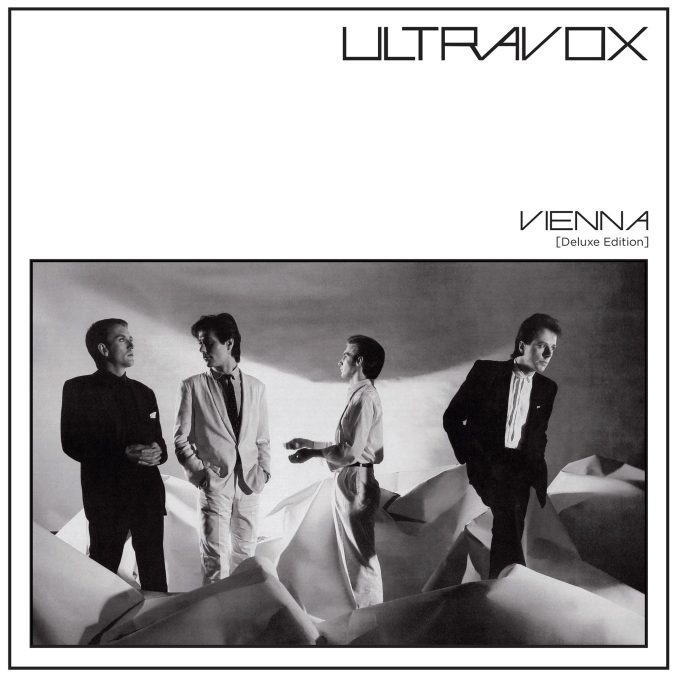 By the time British new wave group Ultravox made Vienna, they already had three albums under their belt. Released in 1980, Vienna is a pioneering record made just before synth-pop fully swarmed the UK. As was the case with many albums of the sub-genre back then, Vienna combines rich elements of post-punk angst and new wave distortion to fill out their own Kraftwerk homage. Though the record was, at the time, considered a mimic of the band’s earlier work, Vienna is—at its core—a really wonderful synth-pop pastoral engrossed in verbose, digestible quantities. Whether or not it’s a retread of Ultravox’s previous work, songs like “Sleepwalk,” “All Stood Still” and “New Europeans” are great, undeniable compositions that are among some of the best Euro-electro tracks of its era.
By the time British new wave group Ultravox made Vienna, they already had three albums under their belt. Released in 1980, Vienna is a pioneering record made just before synth-pop fully swarmed the UK. As was the case with many albums of the sub-genre back then, Vienna combines rich elements of post-punk angst and new wave distortion to fill out their own Kraftwerk homage. Though the record was, at the time, considered a mimic of the band’s earlier work, Vienna is—at its core—a really wonderful synth-pop pastoral engrossed in verbose, digestible quantities. Whether or not it’s a retread of Ultravox’s previous work, songs like “Sleepwalk,” “All Stood Still” and “New Europeans” are great, undeniable compositions that are among some of the best Euro-electro tracks of its era. 45. Tegan and Sara: Love You to Death (2016)
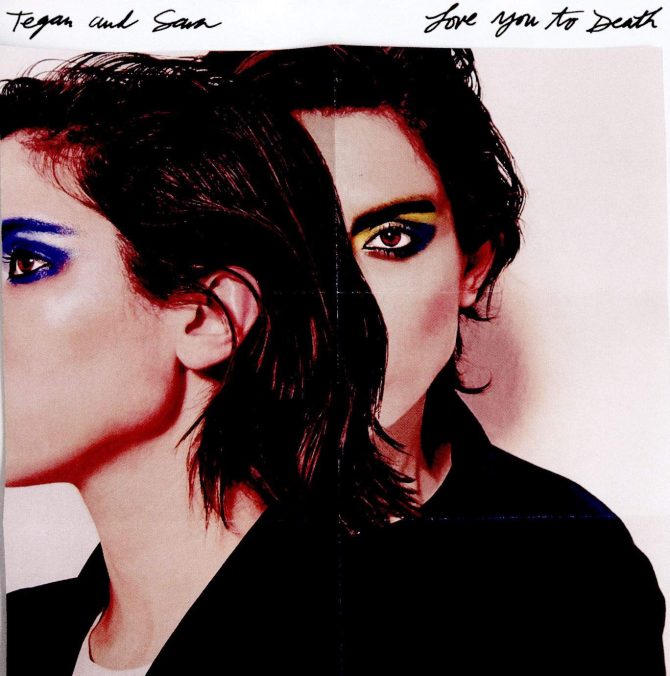 The eighth studio album from Canadian pop duo Tegan and Sara is a synth-pop majesty—and it came out on Neil Young’s Vapor label, and the Canadian prince of rock ‘n’ roll was known to dabble in electronic work himself once upon a time. Love You to Death came out in 2016, and it’s an exquisite showcase of the duo’s wondrous songwriting prowess. Packed with summer anthems of romance and cross-country shenanigans, Love You to Death is timeless pop magic with earworm melodies and catchy hooks that’ll plug your heart with euphoria. A song like “Boyfriend” sounds like a perfect blend of the chart-topping bubblegum of Katy Perry and Taylor Swift and the intricate, dynamic arrangements of a Yellow Magic Orchestra album. The massiveness of “Faint of Heart” and the reflectiveness of “That Girl” round out a rich, lush, ambitious mid-career outing from one of indie rock’s very best.
The eighth studio album from Canadian pop duo Tegan and Sara is a synth-pop majesty—and it came out on Neil Young’s Vapor label, and the Canadian prince of rock ‘n’ roll was known to dabble in electronic work himself once upon a time. Love You to Death came out in 2016, and it’s an exquisite showcase of the duo’s wondrous songwriting prowess. Packed with summer anthems of romance and cross-country shenanigans, Love You to Death is timeless pop magic with earworm melodies and catchy hooks that’ll plug your heart with euphoria. A song like “Boyfriend” sounds like a perfect blend of the chart-topping bubblegum of Katy Perry and Taylor Swift and the intricate, dynamic arrangements of a Yellow Magic Orchestra album. The massiveness of “Faint of Heart” and the reflectiveness of “That Girl” round out a rich, lush, ambitious mid-career outing from one of indie rock’s very best. 44. Grey Factor: 1979-1980 A.D. (2023)
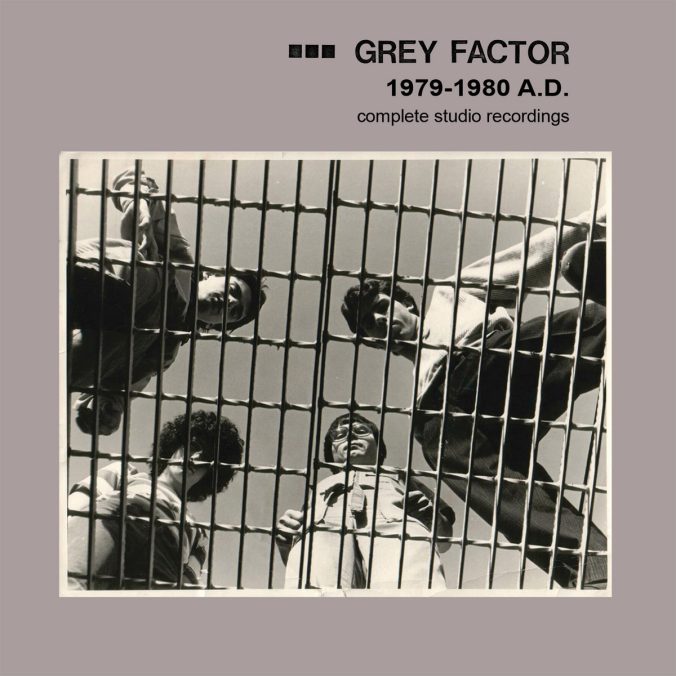 Long unknown, Los Angeles electronic collective Grey Factor used to make these terrific, brooding synth records draped in dark, sparing post-punk. Earlier this summer, Damaged Disco compiled the group’s studio recordings from 1979 through 1980 and packaged them into one, glorious album. 1979-1980 A.D. is a goldmine of synth-pop and electronica. Jeff Jacquin, Joey Cevetello, Jon Pospisil and Paul Fontana took the work of Television, Talking Heads and Wire and funneled it into a vessel that would be perfected and embellished by New Order and Depeche Mode. “You’re so Cool,” “All in a Day’s Work” and “Above the Gun” are legendary, proto-synth-pop darlings. Grey Factor may not have gotten their time in the sun while together, but 1979-1980 A.D. has put them in front of more eyes than ever—and helped solidify their existence as an essential electronic group.
Long unknown, Los Angeles electronic collective Grey Factor used to make these terrific, brooding synth records draped in dark, sparing post-punk. Earlier this summer, Damaged Disco compiled the group’s studio recordings from 1979 through 1980 and packaged them into one, glorious album. 1979-1980 A.D. is a goldmine of synth-pop and electronica. Jeff Jacquin, Joey Cevetello, Jon Pospisil and Paul Fontana took the work of Television, Talking Heads and Wire and funneled it into a vessel that would be perfected and embellished by New Order and Depeche Mode. “You’re so Cool,” “All in a Day’s Work” and “Above the Gun” are legendary, proto-synth-pop darlings. Grey Factor may not have gotten their time in the sun while together, but 1979-1980 A.D. has put them in front of more eyes than ever—and helped solidify their existence as an essential electronic group. 43. Heaven 17: Penthouse & Pavement (1981)
 Started by Martyn Ware, Ian Craig Marsh and Glenn Gregory—who were all former members of the Human League—Heaven 17 became an entity just as strong as the force it was formed out of. The band’s debut album, Penthouse & Pavement, took some time to find its footing, even though NME named it the fifth best album of 1981. With timeless hooks and memorable melodies, Penthouse & Pavement was a political record that subverted all facets of pretentiousness by delivering apt amounts of wit and rhythm. Any track that jabs at Ronald Reagan by calling him a “fascist god in motion” is good in my book. “(We Don’t Need This) Fascist Groove Thang,” was banned by the BBC, despite its ribbing of fascism and racism through funk music being positioned as ironic, and the album did not achieve any great commercial success. However, in recent years, Penthouse & Pavement has become a marveled synth-pop album that stands atop the shoulders of great songs like “Play to Win” and “The Height of the Fighting.”
Started by Martyn Ware, Ian Craig Marsh and Glenn Gregory—who were all former members of the Human League—Heaven 17 became an entity just as strong as the force it was formed out of. The band’s debut album, Penthouse & Pavement, took some time to find its footing, even though NME named it the fifth best album of 1981. With timeless hooks and memorable melodies, Penthouse & Pavement was a political record that subverted all facets of pretentiousness by delivering apt amounts of wit and rhythm. Any track that jabs at Ronald Reagan by calling him a “fascist god in motion” is good in my book. “(We Don’t Need This) Fascist Groove Thang,” was banned by the BBC, despite its ribbing of fascism and racism through funk music being positioned as ironic, and the album did not achieve any great commercial success. However, in recent years, Penthouse & Pavement has become a marveled synth-pop album that stands atop the shoulders of great songs like “Play to Win” and “The Height of the Fighting.”42. Passion Pit: Gossamer (2012)
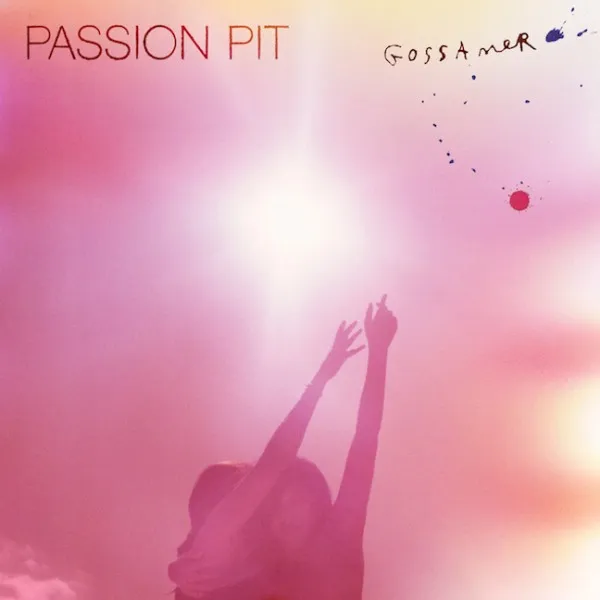 Passion Pit’s sophomore album, Gossamer, is a fantastic, subdued and candy-rich record that is both beautiful and moving. Bandleader Michael Angelakos was firing on all cylinders here, as he embraced maximalist arrangements and bubblegum arpeggios. Songs like “Take a Walk,” “Constant Conversations” and “It’s Not My Fault, I’m Happy” are epic and talismanic mementos of the electronic wave that consumed indie rock at the turn of the 2010s. But it’s “Carried Away” that solidifies Gossamer’s importance in synth-pop history. Every inch of this album is spacious and ambitious, and Angelakos has never been able to replicate such perfection—but that’s not a knock against the Cambridge singer/songwriter; Gossamer is just that one-in-a-million.
Passion Pit’s sophomore album, Gossamer, is a fantastic, subdued and candy-rich record that is both beautiful and moving. Bandleader Michael Angelakos was firing on all cylinders here, as he embraced maximalist arrangements and bubblegum arpeggios. Songs like “Take a Walk,” “Constant Conversations” and “It’s Not My Fault, I’m Happy” are epic and talismanic mementos of the electronic wave that consumed indie rock at the turn of the 2010s. But it’s “Carried Away” that solidifies Gossamer’s importance in synth-pop history. Every inch of this album is spacious and ambitious, and Angelakos has never been able to replicate such perfection—but that’s not a knock against the Cambridge singer/songwriter; Gossamer is just that one-in-a-million. 41. Naked Eyes: Burning Bridges (1983)
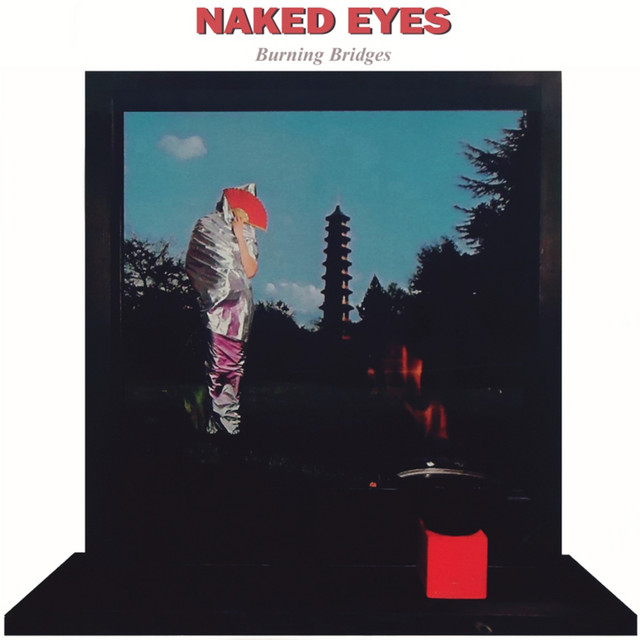
Born from the work first accomplished in the band Neon, the debut album from English new wavers Naked Eyes is a near-perfect first outing that stands on the shoulders of two hit songs. “Promises, Promises” and the Burt Bacharach-penned “Always Something There to Remind Me” are some of the best charting synth-pop tracks of their era, especially the latter. Naked Eyes hit an apex right out of the gate, which is never preferred by any group. However, the towering, enduring perfection of Burning Bridges quickly solidified them as synth-pop legends, and their 1984 follow-up album Fuel for the Fire was damn-near as good. Check out the tracks “Emotion in Motion” and “When the Lights Go Out” for some great, off-kilter, electronic soundscapes. Pete Byrne and Rob Fisher wouldn’t achieve the same success that his Neon bandmates Curt Smith and Roland Orzabal would in Tears for Fears, but their initial stint as Naked Eyes turned them into synth-pop legends.
40. The Weeknd: Dawn FM (2022)
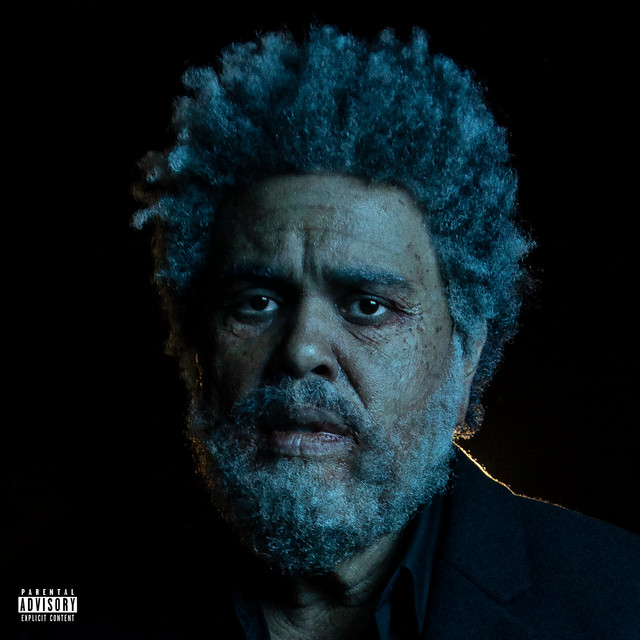 Infusing elements of R&B, soul and hip-hop within its tracklist, The Weeknd’s 2022 masterpiece Dawn FM revels in synth-pop magic. Though its predecessor, After Hours, is equally brilliant, it was here that Abel Tesfaye solidified his unparalleled command of the electronic songbook. What makes Dawn FM worthy of such great distinction is that the album doesn’t aim to replicate anything it pulls influence from. Far too many synth-pop albums make headway these days by bordering on parody. Dawn FM, however, is a masterclass in how to usher the genre into the contemporary zeitgeist by implementing other fixtures of the pop stratosphere. “Take My Breath,” “Sacrifice,” “Out of Time” and “Less Than Zero” are titanic emblems of wondrous nightclub ecstasy.
Infusing elements of R&B, soul and hip-hop within its tracklist, The Weeknd’s 2022 masterpiece Dawn FM revels in synth-pop magic. Though its predecessor, After Hours, is equally brilliant, it was here that Abel Tesfaye solidified his unparalleled command of the electronic songbook. What makes Dawn FM worthy of such great distinction is that the album doesn’t aim to replicate anything it pulls influence from. Far too many synth-pop albums make headway these days by bordering on parody. Dawn FM, however, is a masterclass in how to usher the genre into the contemporary zeitgeist by implementing other fixtures of the pop stratosphere. “Take My Breath,” “Sacrifice,” “Out of Time” and “Less Than Zero” are titanic emblems of wondrous nightclub ecstasy. 39. The Postal Service: Give Up (2003)

It’s mind-boggling sometimes that a band featuring the frontman of Death Cab For Cutie and the frontwoman of Rilo Kiley were able to come together and make one of the best synth-pop albums of the last 30 years. But, under the tutelage of Jimmy Tamborello—known by his DJ stage name Dntel—anything is possible. When The Postal Service released Give Up in 2003, there wasn’t a true synth-pop identity in the mainstream. The Meet Me in the Bathroom era had engulfed rock ‘n’ roll, and even a band like Phoenix wouldn’t become fully entrenched in dance music for another half-decade. Thus, what Ben Gibbard, Tamborello and Jenny Lewis were able to assemble here is, truly, a revelation. Combining indietronica with 1980s keyboard sensibilities, Give Up has only aged with grace since its release 20 years ago. A song like “Such Great Heights” exudes just as much wonder now as it did in the death rattle of Y2K premonitions. Gibbard would also release the legendary Death Cab For Cutie album Transatlanticism later that same year, but it’s Give Up that fully cemented his shape-shifting artistry—and has remained one of the best synth-pop albums in recent memory.
38. Cabaret Voltaire: C O D E (1987)
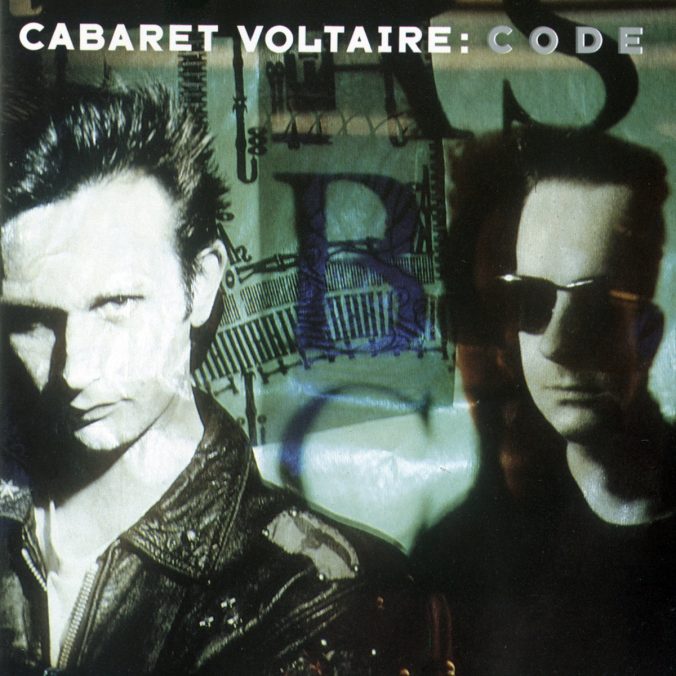 Formed in Sheffield and named after the Zürich nightclub that helped usher in the Dada movement in the early 20th century, Cabaret Voltaire are the trio that merged industrial music with electronica better than anyone had ever before. What’s so brilliant about their eighth album, C O D E, is that, beneath all of the bizarre, crunchy digitation and post-punk experimentation, there is pop architecture. The album is electronic phasing at its best, and the way it spreads a thin, bubblegum sheen atop very cluttered, haunting melodies is masterful and unparalleled. Eons away from the harsh weirdness of their breakthrough record Red Mecca, Cabaret Voltaire took an ambitious leap on C O D E and came out with a terrific, polarizing affair that helped influence Nine Inch Nails, Skinny Puppy and Front Line Assembly. “Don’t Argue” and “Here to Go” helped make C O D E, virtually, a party record. It was still too niche to find much chart success, but it transformed Cabaret Voltaire’s influence on cybernetic, haunting synth-pop.
Formed in Sheffield and named after the Zürich nightclub that helped usher in the Dada movement in the early 20th century, Cabaret Voltaire are the trio that merged industrial music with electronica better than anyone had ever before. What’s so brilliant about their eighth album, C O D E, is that, beneath all of the bizarre, crunchy digitation and post-punk experimentation, there is pop architecture. The album is electronic phasing at its best, and the way it spreads a thin, bubblegum sheen atop very cluttered, haunting melodies is masterful and unparalleled. Eons away from the harsh weirdness of their breakthrough record Red Mecca, Cabaret Voltaire took an ambitious leap on C O D E and came out with a terrific, polarizing affair that helped influence Nine Inch Nails, Skinny Puppy and Front Line Assembly. “Don’t Argue” and “Here to Go” helped make C O D E, virtually, a party record. It was still too niche to find much chart success, but it transformed Cabaret Voltaire’s influence on cybernetic, haunting synth-pop. 37. Eurythmics: Touch (1983)
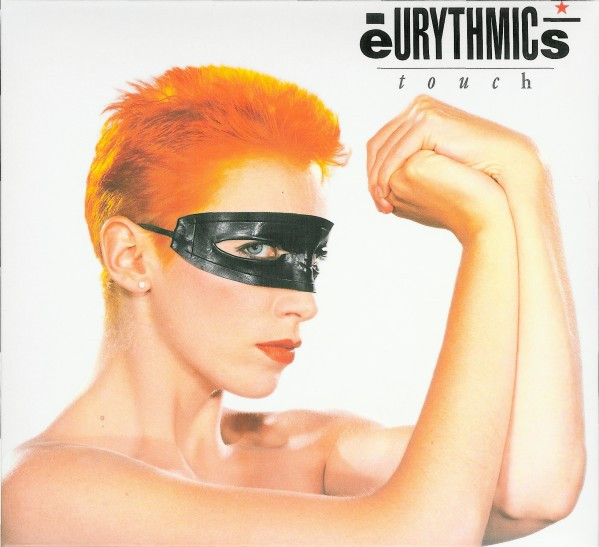 If you prefer Sweet Dreams (Are Made of This), I won’t hold it against you at all. The title track alone marks Eurythmics’ greatness in dance-pop history. However, their 1983 album Touch is one of the best synth-pop records ever made. Shouldered by the opening track (and hit single) “Here Comes the Rain Again,” the album showcases Annie Lennox’s importance on the world of club music. The fact that she and her androgynous stage style opened the door for multiple generations of queer artists does not go unchecked around these parts. Lennox is a shape-shifter who was crucial in synth-pop’s crossover appeal in America. Without her work on songs like “Who’s That Girl?” and “Right by Your Side,” I don’t know that the Billboard Hot 100 would have transitioned from disco to electronic dance music so swiftly in the 1980s. Touch is a benchmark that, unlike Sweet Dreams, is well-rounded and impeccable.
If you prefer Sweet Dreams (Are Made of This), I won’t hold it against you at all. The title track alone marks Eurythmics’ greatness in dance-pop history. However, their 1983 album Touch is one of the best synth-pop records ever made. Shouldered by the opening track (and hit single) “Here Comes the Rain Again,” the album showcases Annie Lennox’s importance on the world of club music. The fact that she and her androgynous stage style opened the door for multiple generations of queer artists does not go unchecked around these parts. Lennox is a shape-shifter who was crucial in synth-pop’s crossover appeal in America. Without her work on songs like “Who’s That Girl?” and “Right by Your Side,” I don’t know that the Billboard Hot 100 would have transitioned from disco to electronic dance music so swiftly in the 1980s. Touch is a benchmark that, unlike Sweet Dreams, is well-rounded and impeccable.36. MGMT: Little Dark Age (2018)

When MGMT released Oracular Spectacular in 2007, they changed post-Y2K rock ‘n’ roll forever. The fact that they’ve only released three studio albums in the 16 years since can be a bit of a culture shock. But it’s their most recent endeavor, 2018’s Little Dark Age, that quickly became their best and brightest project yet. It’s poppy, psychedelic and dynamic, pulling the best parts from each of the band’s previous records to form a no-skip masterpiece. What changed this time around, however, is the way in which Andrew VanWyngarden and Ben Goldwasser explore synthesizers. Inspired by the demise of America’s political and social climate under Donald Trump, MGMT made songs like “When You Die,” “James,” the title track and “One Thing Left to Try,” and each of them flicker aglow with such buoyant pop wonder. Standout track “Me and Michael” is one of the best synth-pop tracks of the last 10 years.
35. ABC: The Lexicon of Love (1982)
 The debut album from English sextet ABC is a project that sees the potential of synth-pop transcend to heights that obliterate the sub-genre altogether. Lead vocalist Martin Fry employs a cabaret singer-like bravado, as he transports listeners in and out of every song like a grand curator of divine grooviness. At many points a prime example of sophisti-pop, The Lexicon of Love takes rich synthesizers and applies them to a full ecosystem of swooning, unforgettable soundscapes. Tap into the album and you’ll be awestruck by how brilliantly it touches every fabric of the DNA that flooded the pop charts at the time. A song like “The Look of Love, Pt. 1” is dazzling and hypnotic. ABC spent all of their magic on the first go, and the result is a masterpiece.
The debut album from English sextet ABC is a project that sees the potential of synth-pop transcend to heights that obliterate the sub-genre altogether. Lead vocalist Martin Fry employs a cabaret singer-like bravado, as he transports listeners in and out of every song like a grand curator of divine grooviness. At many points a prime example of sophisti-pop, The Lexicon of Love takes rich synthesizers and applies them to a full ecosystem of swooning, unforgettable soundscapes. Tap into the album and you’ll be awestruck by how brilliantly it touches every fabric of the DNA that flooded the pop charts at the time. A song like “The Look of Love, Pt. 1” is dazzling and hypnotic. ABC spent all of their magic on the first go, and the result is a masterpiece.34. Tame Impala: Currents (2015)
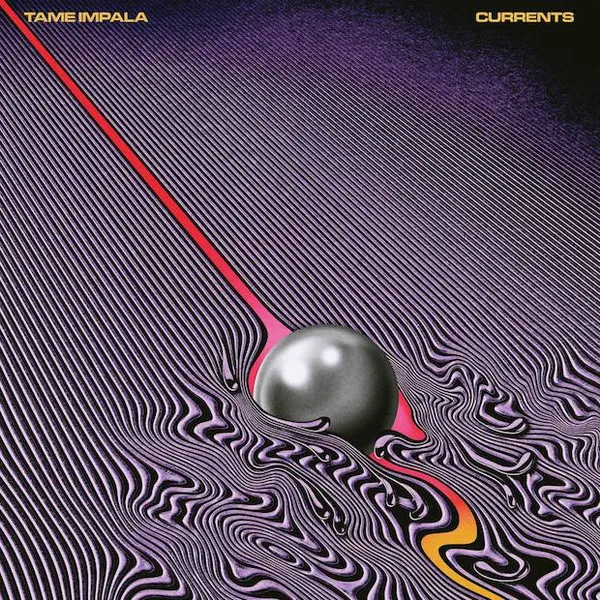
Perhaps it’s a controversial inclusion, but Tame Impala’s seminal third album, Currents, is Kevin Parker’s synth-laden masterclass. With psychedelia, soul and disco inflections, the record is the perfect showcase of how indebted to R&B synth-pop truly is. Songs like “‘Cause I’m a Man,” “Disciples” and “Eventually” are some of Tame Impala’s best and each play up the power of a rock ‘n’ roll project that doesn’t shy away from electronic euphoria. Much more digital than Lonerism and InnerSpeaker, there’s a heavier emphasis on synthesizers than there is on guitars. More than anything, Currents is a club record—and a dazzling foray into the medium by the coolest psych-rock outfit working today. There’s an accessible entry point on Tame Impala’s masterpiece for everyone, whether you’re a Dead Head looking to vibe or a Depeche Mode devotee aiming for some soul-lifting keyboard arpeggios. Currents is a modern classic that upends the very notion of a one-trick pony. It proved that Tame Impala was a project that could take Parker anywhere, and it remains one of the most popular indie releases in recent memory.
33. Phoenix: Wolfgang Amadeus Phoenix (2009)
 One of the front-running albums in the wave of electronic-based rock ‘n’ roll that took over the charts in the late-2000s and early-2010s, Phoenix’s Wolfgang Amadeus Phoenix is a project that blends everything the mainstream demanded without losing the vision. Call it new wave, synth-pop, sophisti-pop or plain indie rock, Wolfgang Amadeus Phoenix is a brilliant electronic benchmark. “Lisztomania,” “1901,” “Lasso,” “Fences”—the tracklist goes on and on and on and never lets up. The album is glittery and heartfelt, as each track floats atop gorgeous, dynamic instrumentals that showcase how synth-pop has transformed since the barebones keyboard origins in the 1970s. Rather than fluttering in patient, ambient soundscapes, Phoenix kicks it up a notch and delivers quick, energetic anthems that you’ll be humming in your head for days on end.
One of the front-running albums in the wave of electronic-based rock ‘n’ roll that took over the charts in the late-2000s and early-2010s, Phoenix’s Wolfgang Amadeus Phoenix is a project that blends everything the mainstream demanded without losing the vision. Call it new wave, synth-pop, sophisti-pop or plain indie rock, Wolfgang Amadeus Phoenix is a brilliant electronic benchmark. “Lisztomania,” “1901,” “Lasso,” “Fences”—the tracklist goes on and on and on and never lets up. The album is glittery and heartfelt, as each track floats atop gorgeous, dynamic instrumentals that showcase how synth-pop has transformed since the barebones keyboard origins in the 1970s. Rather than fluttering in patient, ambient soundscapes, Phoenix kicks it up a notch and delivers quick, energetic anthems that you’ll be humming in your head for days on end. 32. Fad Gadget: Gag (1984)
 The fourth and final album from Francis John Tovey—aka Fad Gadget—is one of the best experimental synth-pop albums ever made. Released in 1984, Gag was produced by Gareth Jones, who made a name for himself after working with Depeche Mode and Erasure. Gag is an industrial, avant-garde take on a sub-genre embellished by poppier, more digestible acts like the Human League and Soft Cell. Fad Gadget’s take on all of it was intriguing at the time, only to find a greater appreciation in the years since his death in 2002. Gag implements arrangements that feature sound objects and a sarcastic, unabashed social commentary on everything from consumerism to queerness—hell, even the name Fad Gadget is a biting take on sexuality itself. Fad Gadget would often sing in a deadpan, monotone voice that’s still evoked by artists like Kirin J Callinan. Gag was a boundary-pushing, daring record that questioned what margins synth-pop and experimental electronic music belonged to.
The fourth and final album from Francis John Tovey—aka Fad Gadget—is one of the best experimental synth-pop albums ever made. Released in 1984, Gag was produced by Gareth Jones, who made a name for himself after working with Depeche Mode and Erasure. Gag is an industrial, avant-garde take on a sub-genre embellished by poppier, more digestible acts like the Human League and Soft Cell. Fad Gadget’s take on all of it was intriguing at the time, only to find a greater appreciation in the years since his death in 2002. Gag implements arrangements that feature sound objects and a sarcastic, unabashed social commentary on everything from consumerism to queerness—hell, even the name Fad Gadget is a biting take on sexuality itself. Fad Gadget would often sing in a deadpan, monotone voice that’s still evoked by artists like Kirin J Callinan. Gag was a boundary-pushing, daring record that questioned what margins synth-pop and experimental electronic music belonged to. 31. Simple Minds: Real to Real Cacophony (1979)
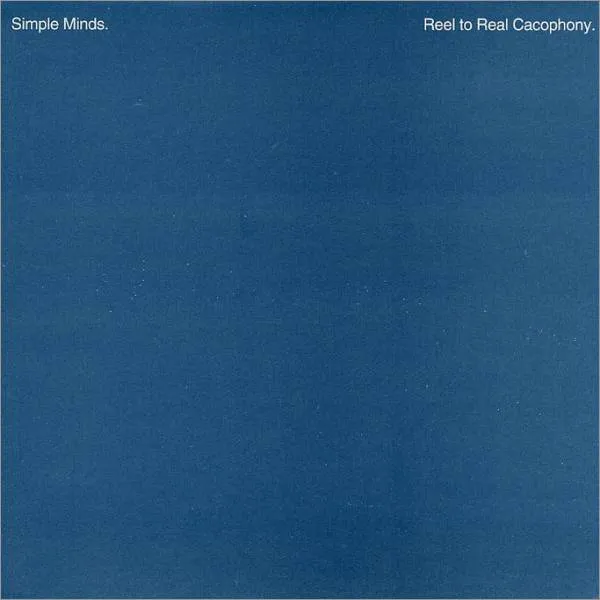 Though they are best known for soundtracking the hit theme song of The Breakfast Club, Scottish rockers Simple Minds are also responsible for writing one of the best bridge albums of all-time. Their 1979 sophomore project Real to Real Cacophony was the perfect transition from rock ‘n’ roll’s post-punk after-burn into the new wave-inspired synth-pop that would transform Europe in the 1980s. It’s a singular effort, as Simple Minds never reached a similar apex (though Empires and Dance came close a year later). Tracks like “Naked Eye” and “Changeling” are of the best dance compositions of its time, but “Premonition” is the glitchy, gauzy, transformative benchmark that solidifies that Simple Minds were anything but a one-hit wonder. Real to Real Cacophony is immortal in its impact on Reagan-era work from Depeche Mode and New Order; a titanic proto-synth-pop effort that sounds timeless 44 years later.
Though they are best known for soundtracking the hit theme song of The Breakfast Club, Scottish rockers Simple Minds are also responsible for writing one of the best bridge albums of all-time. Their 1979 sophomore project Real to Real Cacophony was the perfect transition from rock ‘n’ roll’s post-punk after-burn into the new wave-inspired synth-pop that would transform Europe in the 1980s. It’s a singular effort, as Simple Minds never reached a similar apex (though Empires and Dance came close a year later). Tracks like “Naked Eye” and “Changeling” are of the best dance compositions of its time, but “Premonition” is the glitchy, gauzy, transformative benchmark that solidifies that Simple Minds were anything but a one-hit wonder. Real to Real Cacophony is immortal in its impact on Reagan-era work from Depeche Mode and New Order; a titanic proto-synth-pop effort that sounds timeless 44 years later. 30. The 1975: A Brief Inquiry Into Online Relationships (2018)
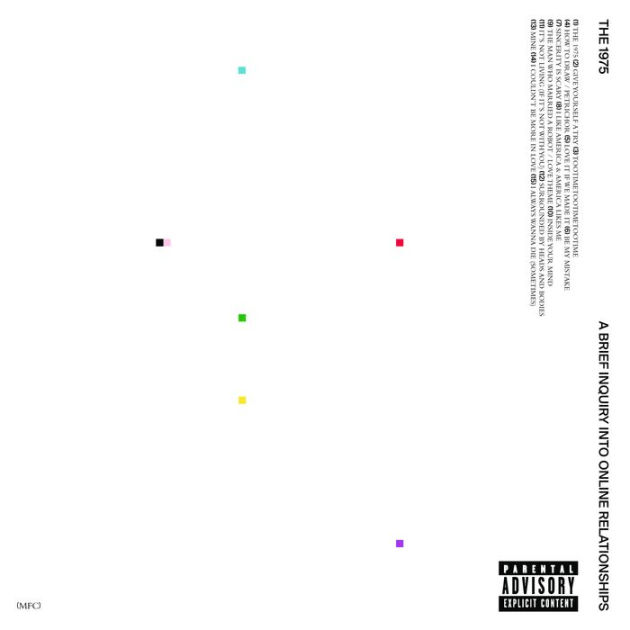 The 1975 are a puzzling band, notably for how they are one of the biggest groups in the world and only have one truly great record. Their 2018 masterpiece A Brief Inquiry into Online Relationships is just so undeniable, though. Dubbed a “maximalist experimental” album, A Brief Inquiry is a tremendous soundscape that fuses rock, electronica and ambient. Out of all of the records on this list, it might have the largest scope of themes—as Matty Healy and company ruminate on suicide, mental illness, anxiety, mortality and addiction through black humor and heavy metaphors. A Brief Inquiry, as the title suggests, largely considers how millennials are meant to survive in a digital world. Songs like “Love It If We Made It,” “It’s Not Living (If It’s Not Living with You)” and “The Man Who Married a Robot / Love Theme” merge samples, horn arrangements and teardrop pastorals in such a rich way. Love the 1975 or hate them, A Brief Inquiry Into Online Relationships is one of the best synth-pop records of the last 10 years.
The 1975 are a puzzling band, notably for how they are one of the biggest groups in the world and only have one truly great record. Their 2018 masterpiece A Brief Inquiry into Online Relationships is just so undeniable, though. Dubbed a “maximalist experimental” album, A Brief Inquiry is a tremendous soundscape that fuses rock, electronica and ambient. Out of all of the records on this list, it might have the largest scope of themes—as Matty Healy and company ruminate on suicide, mental illness, anxiety, mortality and addiction through black humor and heavy metaphors. A Brief Inquiry, as the title suggests, largely considers how millennials are meant to survive in a digital world. Songs like “Love It If We Made It,” “It’s Not Living (If It’s Not Living with You)” and “The Man Who Married a Robot / Love Theme” merge samples, horn arrangements and teardrop pastorals in such a rich way. Love the 1975 or hate them, A Brief Inquiry Into Online Relationships is one of the best synth-pop records of the last 10 years. 29. The Magnetic Fields: Holiday (1994)
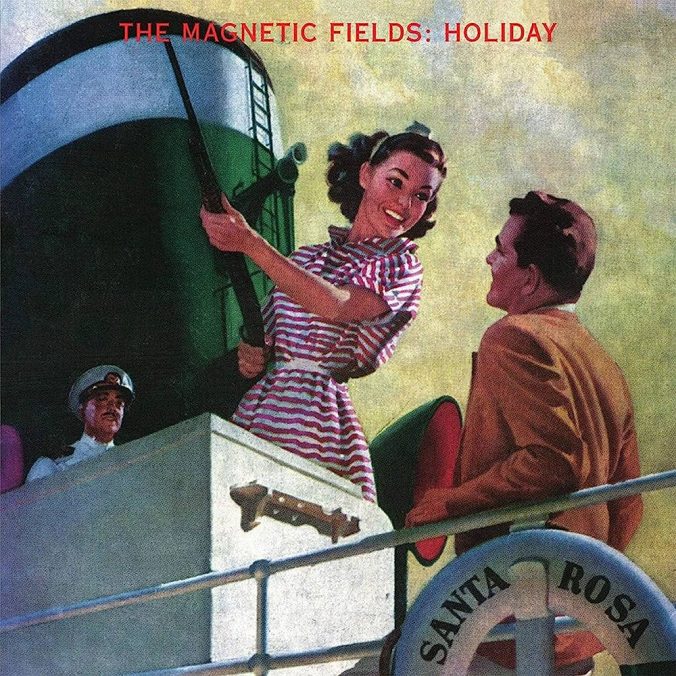 God, what a band! The Magnetic Fields are one of those groups that, somehow, still manage to float under the radar—even after releasing four classic albums in a row in the 1990s. The second installment in that run, 1994’s Holiday, is a masterpiece (as are the others, to be fair) of seismic proportions. Holiday could have come out 10 years before it did and it would have been just as legendary. The Boston trio, under Stephin Merritt’s leadership, were at an apex around this time, as they’d put out Get Lost and 69 Love Songs back-to-back afterwards. But it’s Holiday that set the precedent, with all-timers like “Strange Powers,” “In My Secret Place” and “Sugar World.” The band’s ability to fuse pop-rock with keyboard work remains unparalleled, and you can trace the Magnetic Fields’ influence all the way up until the modern day.
God, what a band! The Magnetic Fields are one of those groups that, somehow, still manage to float under the radar—even after releasing four classic albums in a row in the 1990s. The second installment in that run, 1994’s Holiday, is a masterpiece (as are the others, to be fair) of seismic proportions. Holiday could have come out 10 years before it did and it would have been just as legendary. The Boston trio, under Stephin Merritt’s leadership, were at an apex around this time, as they’d put out Get Lost and 69 Love Songs back-to-back afterwards. But it’s Holiday that set the precedent, with all-timers like “Strange Powers,” “In My Secret Place” and “Sugar World.” The band’s ability to fuse pop-rock with keyboard work remains unparalleled, and you can trace the Magnetic Fields’ influence all the way up until the modern day. 28. Hot Chip: The Warning (2006)
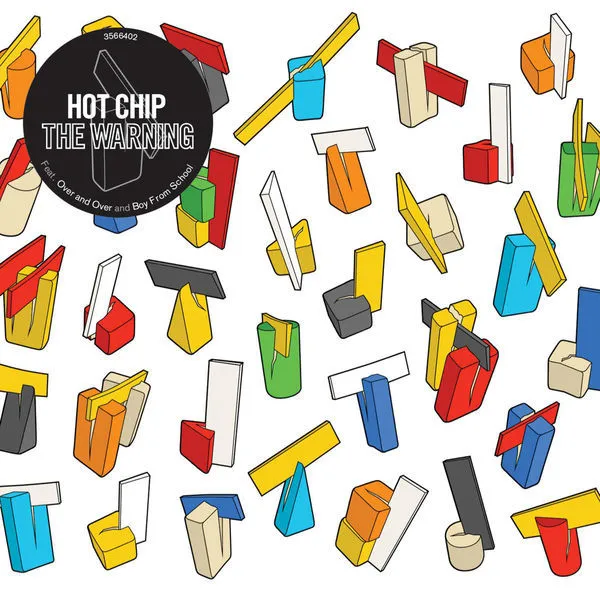 I find it hard to believe that The Warning came out 17 years ago, given how pristine and timeless the record still sounds in 2023. It’s Hot Chip’s biggest album for a reason, as tracks like “Over and Over” and “Boy from School” are essential electro-pop outfits. Conjuring fits of the Post Service and Fad Gadget, Hot Chip figured out how to perfect droning, distorted aesthetics with eruptive momentum. There are flickers of early New Order all over The Warning, yet the album never loses its originality. “Hot Chip will break your legs, snap off your head” vocalist Alexis Taylor sings on the title track. “Hot Chip will put you down under the ground.” It’s gloomy, matter-of-fact and chaotic. The twinkling synths, the choppy percussion, the mythical vocalizations—the perfection of The Warning almost feels improbable. How it came together in the pop landscape of the mid-2000s feels even more improbable. Hot Chip continue to make blissful synth-pop, and their continued reverence was set fully in motion by their sophomore breakthrough—which is also, to no surprise, one of the best synth-pop records of the last 20 years.
I find it hard to believe that The Warning came out 17 years ago, given how pristine and timeless the record still sounds in 2023. It’s Hot Chip’s biggest album for a reason, as tracks like “Over and Over” and “Boy from School” are essential electro-pop outfits. Conjuring fits of the Post Service and Fad Gadget, Hot Chip figured out how to perfect droning, distorted aesthetics with eruptive momentum. There are flickers of early New Order all over The Warning, yet the album never loses its originality. “Hot Chip will break your legs, snap off your head” vocalist Alexis Taylor sings on the title track. “Hot Chip will put you down under the ground.” It’s gloomy, matter-of-fact and chaotic. The twinkling synths, the choppy percussion, the mythical vocalizations—the perfection of The Warning almost feels improbable. How it came together in the pop landscape of the mid-2000s feels even more improbable. Hot Chip continue to make blissful synth-pop, and their continued reverence was set fully in motion by their sophomore breakthrough—which is also, to no surprise, one of the best synth-pop records of the last 20 years. 27. Bronski Beat: The Age of Consent (1984)
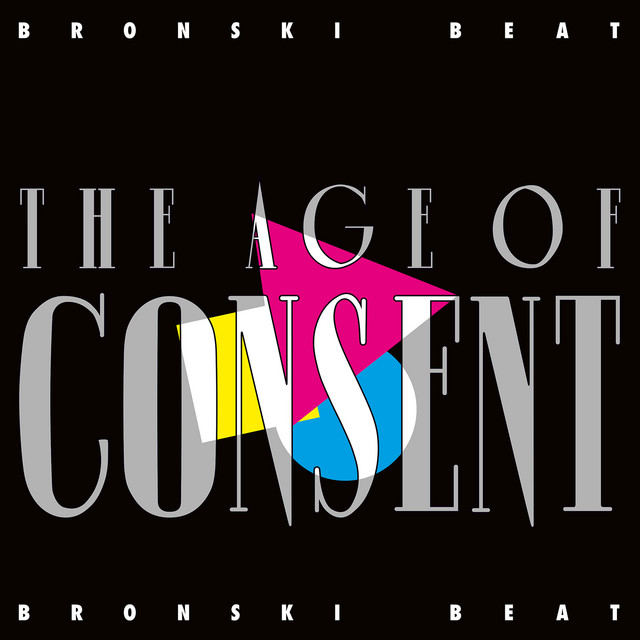 Perhaps one of the most underrated synth-pop records of all-time, Bronski Beat’s The Age of Consent is one of the best projects from 1984. The London trio named themselves after bandleader Steve Bronski and struck gold on their debut album. Songs like “Smalltown Boy,” “Junk” and “No More War” are darkly pop tracks that center Jimmy Somerville’s haunting falsetto vocals. Titled in response to the age of consent laws towards queer people in England at the time, The Age of Consent is a retaliation against the stigma, violence and criminalized legislation leveled at gay people in the United Kingdom. Few synth-pop records were as revolutionary as Bronski Beat’s first effort, and how lucky we are to have gotten their magic up until keyboardist Larry Steinbachek’s death in 2016.
Perhaps one of the most underrated synth-pop records of all-time, Bronski Beat’s The Age of Consent is one of the best projects from 1984. The London trio named themselves after bandleader Steve Bronski and struck gold on their debut album. Songs like “Smalltown Boy,” “Junk” and “No More War” are darkly pop tracks that center Jimmy Somerville’s haunting falsetto vocals. Titled in response to the age of consent laws towards queer people in England at the time, The Age of Consent is a retaliation against the stigma, violence and criminalized legislation leveled at gay people in the United Kingdom. Few synth-pop records were as revolutionary as Bronski Beat’s first effort, and how lucky we are to have gotten their magic up until keyboardist Larry Steinbachek’s death in 2016. 26. The Beach Boys: The Beach Boys Love You (1977)
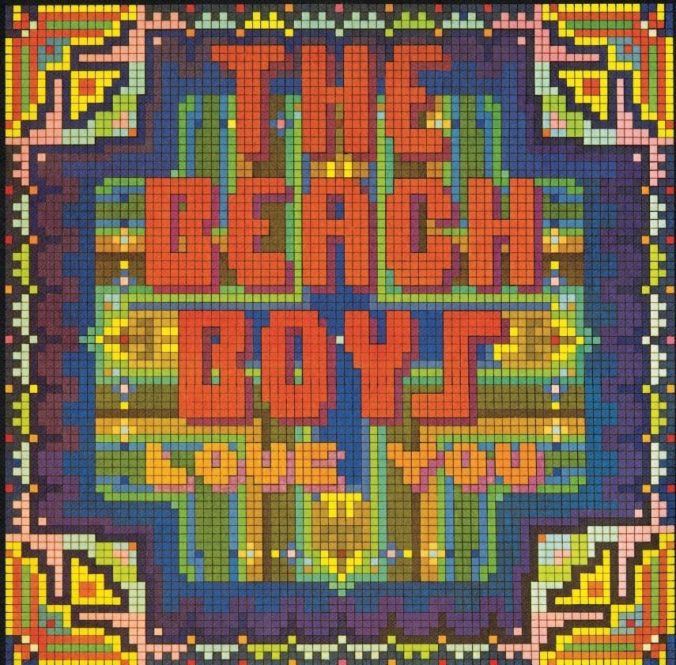 Released in 1977 and featuring songs as old as 1970, the Beach Boys’ 21st album as a band is, essentially, a Brian Wilson solo effort. When The Beach Boys Love You hit the shelves, it wasn’t very well-received by the critics. However, in modern times, it’s largely lauded as a revolutionary album in the synth-pop cannon. Lester Bangs even called it the band’s “best album ever.” Many of the song’s channel adolescent themes, which are juxtaposed by all of the members singing with gravelly, imperfect bravados. Wilson himself has considered the record one of his most important statements, and songs like “The Night Was So Young,” “I’ll Be He’s Nice” and “Roller Skating Child” are some of the purest compositions in the band’s catalog. Love You doesn’t have the cultural reputation that Pet Sounds does, but its importance in musical lore has influenced everyone from Patti Smith to Sonic Youth to R.E.M. to Alex Chilton to Yo La Tengo. As was always the case with Wilson’s oeuvre, he was ahead of the curve—and Love You predated a wave of art- and synth-pop that would arrive before 1977 concluded.
Released in 1977 and featuring songs as old as 1970, the Beach Boys’ 21st album as a band is, essentially, a Brian Wilson solo effort. When The Beach Boys Love You hit the shelves, it wasn’t very well-received by the critics. However, in modern times, it’s largely lauded as a revolutionary album in the synth-pop cannon. Lester Bangs even called it the band’s “best album ever.” Many of the song’s channel adolescent themes, which are juxtaposed by all of the members singing with gravelly, imperfect bravados. Wilson himself has considered the record one of his most important statements, and songs like “The Night Was So Young,” “I’ll Be He’s Nice” and “Roller Skating Child” are some of the purest compositions in the band’s catalog. Love You doesn’t have the cultural reputation that Pet Sounds does, but its importance in musical lore has influenced everyone from Patti Smith to Sonic Youth to R.E.M. to Alex Chilton to Yo La Tengo. As was always the case with Wilson’s oeuvre, he was ahead of the curve—and Love You predated a wave of art- and synth-pop that would arrive before 1977 concluded.25. Lorde: Melodrama (2017)

Heralded as not only Lorde’s masterpiece but one of the greatest albums of this century, Melodrama is one of the best sophomore efforts in recent memory. There’s a reason that the New Zealand singer/songwriter is lauded as a genius; Melodrama is an electro-pop fever dream of beautiful magnitude. “Supercut” by itself is one of the best synth-pop songs ever. “Green Light,” “Perfect Places” and “Homemade Dynamite” are also pretty damn great. Lorde’s previous record, Pure Heroine, implemented more hip-hop minimalism, while Melodrama fully absorbed the art of piano-based arrangements. With drum machines, a bevy of synthesizers and Jack Antonoff’s production in tow, Lorde transcended to new, uncharted heights. Melodrama was snubbed for Album of the Year at the Grammys, but the record endures as brilliant pop perfection—something Lorde will always possess in spades.
24. Grimes: Visions (2012)
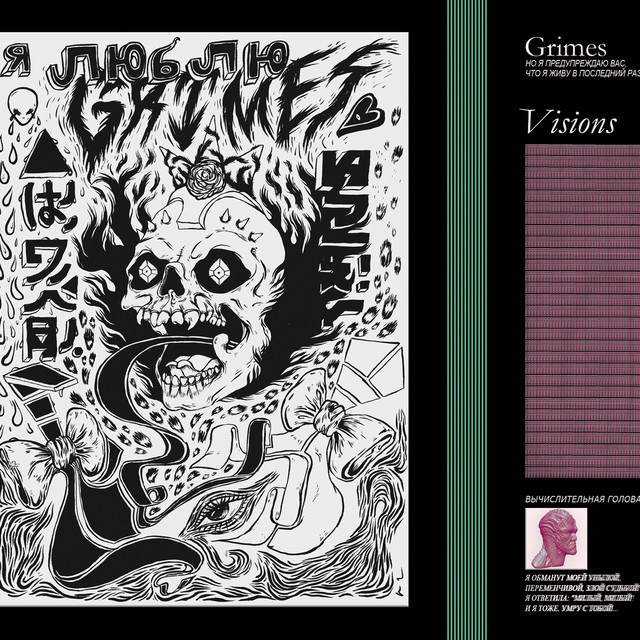 It was a close race here between Visions and Art Angels, two of the very best synth- and art-pop records of the last 15 years. However, the decision to go with Visions comes with the very plain truth that, without it, Art Angels wouldn’t exist. Grimes’ third studio album very much carried the torch that opened up a world in which something like Miss Anthropocene could get made in 2020. Credited with putting Montreal’s DIY scene back on the map in 2012, Visions is a radically great, experimental pop record that centers a bevy of synthesizers at its core. Grimes is one of our greatest minds when it comes to assembling a track list that is conceptual, streamlined and aesthetically blissful. Visions has hooks that are such rich earworms that they’ll put you in a tailspin. Songs like “Genesis” and “Oblivion” are timeless, and Grimes didn’t just hit an apex on Visions; she helped keep an entire movement of synth-pop in the immediate cultural eye.
It was a close race here between Visions and Art Angels, two of the very best synth- and art-pop records of the last 15 years. However, the decision to go with Visions comes with the very plain truth that, without it, Art Angels wouldn’t exist. Grimes’ third studio album very much carried the torch that opened up a world in which something like Miss Anthropocene could get made in 2020. Credited with putting Montreal’s DIY scene back on the map in 2012, Visions is a radically great, experimental pop record that centers a bevy of synthesizers at its core. Grimes is one of our greatest minds when it comes to assembling a track list that is conceptual, streamlined and aesthetically blissful. Visions has hooks that are such rich earworms that they’ll put you in a tailspin. Songs like “Genesis” and “Oblivion” are timeless, and Grimes didn’t just hit an apex on Visions; she helped keep an entire movement of synth-pop in the immediate cultural eye. 23. Devo: Oh No! It’s Devo! (1982)
 Any record that Devo released between 1980 and 1988 could have made it onto this list, and, perhaps, the obvious answer would be Freedom of Choice—the band’s wildly successful 1980 record that featured “Whip It.” But there’s something underrated and brilliant about their 1982 album Oh, No! It’s Devo. The Ohio quintet, led by Mark Mothersbaugh, are doing some real slick stuff on this one, as songs like “Peek-a-Boo!,” “That’s Good” and “Speed Racer” are such deft synth-pop made in-response to critics lambasting the band as “fascists” and “clowns.” Oh, No! It’s Devo was, according to bassist Gerald Casale, quite literally conceived under the idea of “What would an album by fascist clowns sound like?” It’s a polarizing record, no doubt, as the song “I Desire” was criticized for how the lyrics were directly inspired by a poem written by John Hinckley, Jr. The result, however, is a charming, bizarre and elaborate synth-pop record that stands the test of time and cements Devo as one of our greatest groups—but we already knew that.
Any record that Devo released between 1980 and 1988 could have made it onto this list, and, perhaps, the obvious answer would be Freedom of Choice—the band’s wildly successful 1980 record that featured “Whip It.” But there’s something underrated and brilliant about their 1982 album Oh, No! It’s Devo. The Ohio quintet, led by Mark Mothersbaugh, are doing some real slick stuff on this one, as songs like “Peek-a-Boo!,” “That’s Good” and “Speed Racer” are such deft synth-pop made in-response to critics lambasting the band as “fascists” and “clowns.” Oh, No! It’s Devo was, according to bassist Gerald Casale, quite literally conceived under the idea of “What would an album by fascist clowns sound like?” It’s a polarizing record, no doubt, as the song “I Desire” was criticized for how the lyrics were directly inspired by a poem written by John Hinckley, Jr. The result, however, is a charming, bizarre and elaborate synth-pop record that stands the test of time and cements Devo as one of our greatest groups—but we already knew that. 22. Nation of Language: A Way Forward (2021)
 Brooklyn’s Nation of Language are one of the few active bands making synth-pop that could actually come out in 1982 without stretching into a nostalgic, copycat place. Their 2021 sophomore album A Way Forward is breathtaking, singular and accessible. Led by spouses Ian Devaney and Aidan Noell, the project is deep-dive into keyboard heaven, as Devaney’s vocals are unprecedented and stoic. If you’ve ever seen Nation of Language play live, then you know that Devaney is one of the best frontmen in all of music. But what makes A Way Forward so brilliant is the synth work from Noell, whose arrangements on songs like “Wounds of Love,” “Across That Fine Line” and “The Grey Commute” are essential benchmarks in synth-pop altogether. Though you might hear Nation of Language and point a finger to OMD or Cabaret Voltaire, they outmuscle any true comparison—the work of a band that is as timeless as they are revolutionary.
Brooklyn’s Nation of Language are one of the few active bands making synth-pop that could actually come out in 1982 without stretching into a nostalgic, copycat place. Their 2021 sophomore album A Way Forward is breathtaking, singular and accessible. Led by spouses Ian Devaney and Aidan Noell, the project is deep-dive into keyboard heaven, as Devaney’s vocals are unprecedented and stoic. If you’ve ever seen Nation of Language play live, then you know that Devaney is one of the best frontmen in all of music. But what makes A Way Forward so brilliant is the synth work from Noell, whose arrangements on songs like “Wounds of Love,” “Across That Fine Line” and “The Grey Commute” are essential benchmarks in synth-pop altogether. Though you might hear Nation of Language and point a finger to OMD or Cabaret Voltaire, they outmuscle any true comparison—the work of a band that is as timeless as they are revolutionary. 21. Talk Talk: It’s My Life (1984)
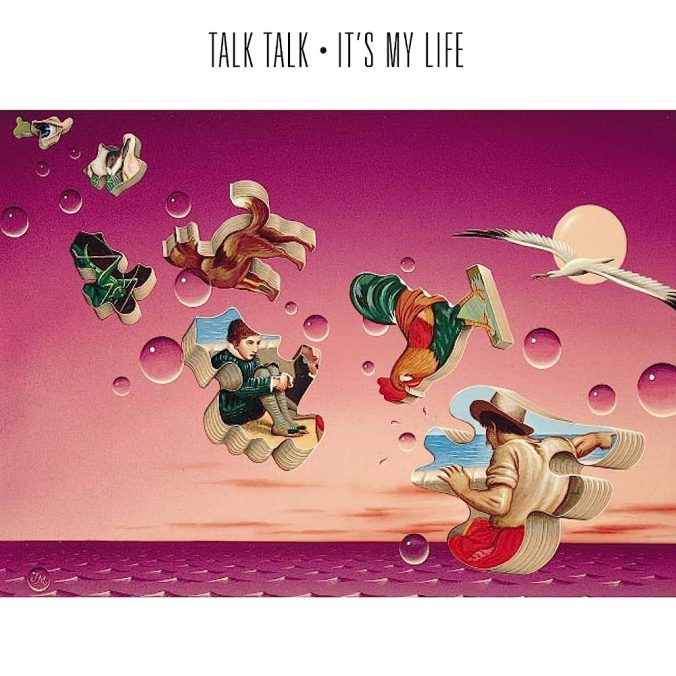 London trio Talk Talk became household names with their song “It’s My Life,” the title track from their 1984 breakthrough, sophomore album. To achieve the glistening synthesizer sounds, the band brought in regular collaborator Tim Friese-Greene to lay down some keys—and he helped turn Talk Talk into one of the most ambitious acts at the forefront of experimental post-rock. But first, on It’s My Life, the band expertly set the stage for their future pivot away from commercial, mainstream synth-pop. They couldn’t have made Spirit of Eden without first making the energetic wall of gorgeous sound that makes up songs like “Such a Shame,” “Call in the Night Boy” and “It’s You.” With Mark Hollis’ pristine vocals at the center of every track, Talk Talk’s sophomore album remains one of the most-inventive, coolest synth-pop albums of the 1980s.
London trio Talk Talk became household names with their song “It’s My Life,” the title track from their 1984 breakthrough, sophomore album. To achieve the glistening synthesizer sounds, the band brought in regular collaborator Tim Friese-Greene to lay down some keys—and he helped turn Talk Talk into one of the most ambitious acts at the forefront of experimental post-rock. But first, on It’s My Life, the band expertly set the stage for their future pivot away from commercial, mainstream synth-pop. They couldn’t have made Spirit of Eden without first making the energetic wall of gorgeous sound that makes up songs like “Such a Shame,” “Call in the Night Boy” and “It’s You.” With Mark Hollis’ pristine vocals at the center of every track, Talk Talk’s sophomore album remains one of the most-inventive, coolest synth-pop albums of the 1980s. 20. Tears for Fears: Songs from the Big Chair (1985)
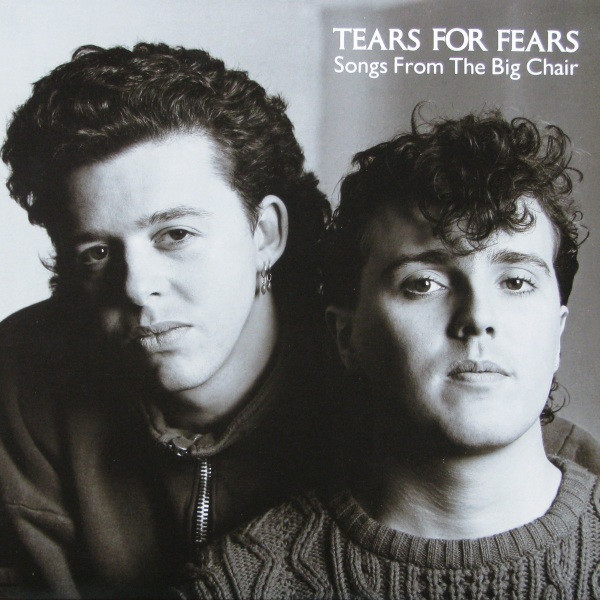
One of the records on this list that truly found crossover appeal on the mainstream charts, Tears for Fears’ sophomore album Songs from the Big Chair is a pop masterpiece that perfectly blends new wave and electronica. “Shout” and “Head Over Heels” are once-in-a-lifetime hit songs, which even greater emphasizes how singular Tears for Fears were in 1985. However, it’s the enduring legacy of “Everybody Wants to Rule the World” that makes this album so divine and unparalleled. While it doesn’t delve as far into the synth-pop realm as other entries on this list, it perfects the parts of the genre it pulls from by merging it with sensibilities that were welcomed by the Billboard Hot 100. With three top-3 hits (and two that reached #1), Songs from the Big Chair is one of the best commercial synth-pop albums of all-time.
19. Patrick Cowley: Afternooners (2017)
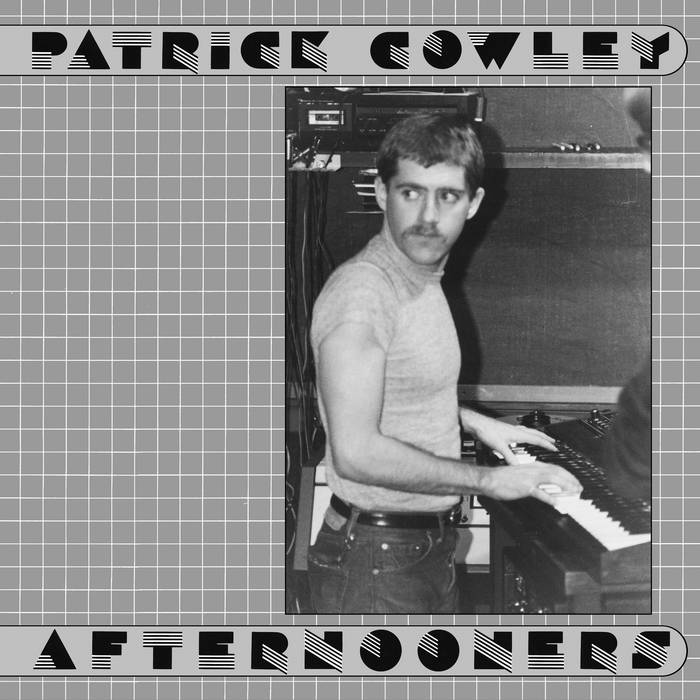 Underground electronic composer Patrick Cowley didn’t find much reverence before his death at age 32 in 1982, but his work has since become considered revolutionary in the long, enduring history of synth-pop. His posthumous album Afternooners—recorded just before his death and left unreleased until 2017—is one of the most magical dance records you’ll ever hear. Noted for his collaborations with California disco titan Sylvester, Cowley became an important fixture in queer club circles in San Francisco. Afternooners songs like “Surfside Sex,” “Big Shot” and “One Hot Afternoon” are immaculate synth instrumentals that are as timeless now in 2023 as they were when they were recorded 41 years ago. It’s a shame that Cowley did not get his flowers while he was alive, but, through the work of re-releases and unearthing vaulted recordings, we get to experience the magic of his work long after he left us. Afternooners is queer club and disco royalty, and a delight to revisit every single time.
Underground electronic composer Patrick Cowley didn’t find much reverence before his death at age 32 in 1982, but his work has since become considered revolutionary in the long, enduring history of synth-pop. His posthumous album Afternooners—recorded just before his death and left unreleased until 2017—is one of the most magical dance records you’ll ever hear. Noted for his collaborations with California disco titan Sylvester, Cowley became an important fixture in queer club circles in San Francisco. Afternooners songs like “Surfside Sex,” “Big Shot” and “One Hot Afternoon” are immaculate synth instrumentals that are as timeless now in 2023 as they were when they were recorded 41 years ago. It’s a shame that Cowley did not get his flowers while he was alive, but, through the work of re-releases and unearthing vaulted recordings, we get to experience the magic of his work long after he left us. Afternooners is queer club and disco royalty, and a delight to revisit every single time. 18. Madonna: Madonna (1983)
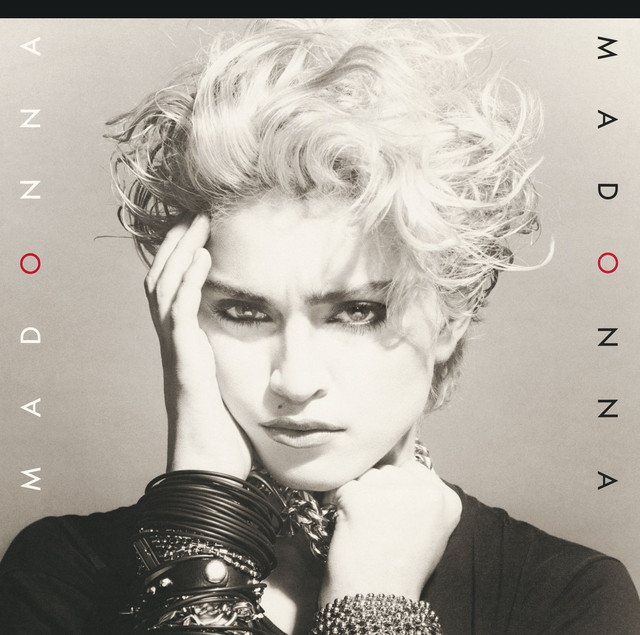 For as often as synth-pop tends to stay in its lane and not flirt with the mass-appeal of pop, Madonna figured out how to blur the line between the two entities on her self-titled debut album. Madonna is, unequivocally, the greatest first entry in any artist’s catalog from the 1980s. The way it blends synth-pop, disco and house music ought to be studied for centuries, as tracks like “Lucky Star,” “Borderline” and “Holiday” are mountain-moving masterclasses. It’s breathless, buoyant and glitzy. Of course, you can make the argument that nearly every pop hit of the decade was a synth-pop record, but Madonna’s shameless dedication to dance-pop and quintessential keyboard arrangements cannot be overlooked—and she’d never make such a brisk, timeless club album again. With everything from a Moog to an Oberheim OB-X to LinnDrum programming, Madonna is a rich, enchanting sonic universe that is relentlessly catchy. If you’re still unconvinced, spend some time with “Burning Up,” a massive track Madonna wrote—while she was a member of the Breakfast Club—that should’ve been a #1 hit and in the echelons of synth-pop royalty.
For as often as synth-pop tends to stay in its lane and not flirt with the mass-appeal of pop, Madonna figured out how to blur the line between the two entities on her self-titled debut album. Madonna is, unequivocally, the greatest first entry in any artist’s catalog from the 1980s. The way it blends synth-pop, disco and house music ought to be studied for centuries, as tracks like “Lucky Star,” “Borderline” and “Holiday” are mountain-moving masterclasses. It’s breathless, buoyant and glitzy. Of course, you can make the argument that nearly every pop hit of the decade was a synth-pop record, but Madonna’s shameless dedication to dance-pop and quintessential keyboard arrangements cannot be overlooked—and she’d never make such a brisk, timeless club album again. With everything from a Moog to an Oberheim OB-X to LinnDrum programming, Madonna is a rich, enchanting sonic universe that is relentlessly catchy. If you’re still unconvinced, spend some time with “Burning Up,” a massive track Madonna wrote—while she was a member of the Breakfast Club—that should’ve been a #1 hit and in the echelons of synth-pop royalty. 17. The Human League: Dare (1981)
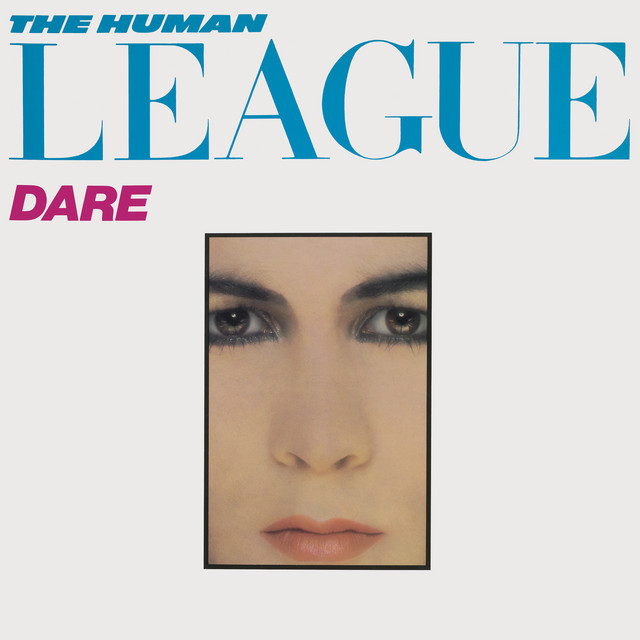 Much like Soft Cell’s Non-Stop Erotic Cabaret, the greatness of The Human League’s Dare is often overshadowed by its big hit, “Don’t You Want Me.” While that single is one of the greatest #1 hits of the 1980s, Dare is rich beyond that instance of success. Tracks like “The Sound of the Crowd,” “Open Your Heart” and “The Things That Dreams Are Made Of” juxtapose elegance with melodrama. It’s pop perfection that’s fully formed, original and intoxicating in every inch of synthesizer glory. Look beyond “Don’t You Want Me” and you’ll see a masterpiece overlooked by the popularity of its hit single. Supposedly CREEM figurehead and rock critic emeritus Lester Bangs died of a drug overdose while listening to Dare. What that counts for is solely up to you, dear reader.
Much like Soft Cell’s Non-Stop Erotic Cabaret, the greatness of The Human League’s Dare is often overshadowed by its big hit, “Don’t You Want Me.” While that single is one of the greatest #1 hits of the 1980s, Dare is rich beyond that instance of success. Tracks like “The Sound of the Crowd,” “Open Your Heart” and “The Things That Dreams Are Made Of” juxtapose elegance with melodrama. It’s pop perfection that’s fully formed, original and intoxicating in every inch of synthesizer glory. Look beyond “Don’t You Want Me” and you’ll see a masterpiece overlooked by the popularity of its hit single. Supposedly CREEM figurehead and rock critic emeritus Lester Bangs died of a drug overdose while listening to Dare. What that counts for is solely up to you, dear reader.16. M83: Hurry Up, We’re Dreaming (2011)
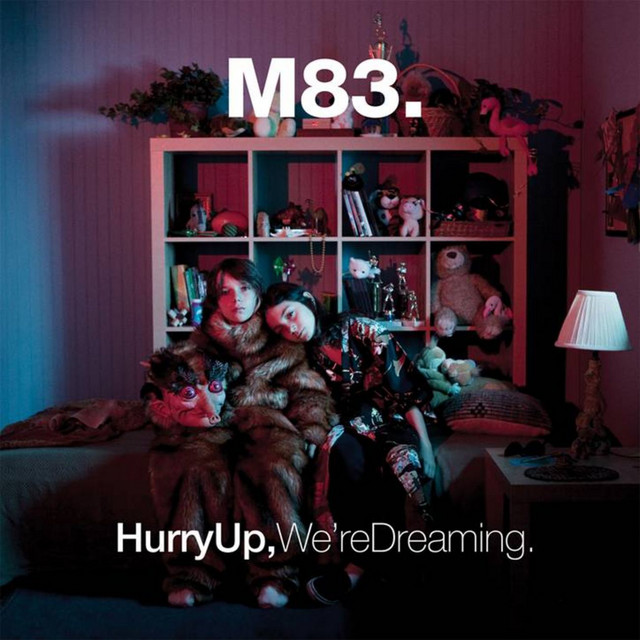 With five albums released in 10 years, French electronic group M83 had established themselves as godfathers of the modern wave of synth-pop and shoegaze. However, it was their 2011 LP Hurry Up, We’re Dreaming where they became a tour de force in a genre that had otherwise lulled for 20 years. It’s sold more than 300,000 copies and was nominated for a Grammy award. Frontman Anthony Gonzalez made the record after moving to LA from France, and he found inspiration in the new landscape he was now surrounded by. Wanting to make something as ambitious and sprawling as Mellon Collie and the Infinite Sadness, Gonzazlez put together Hurry Up, We’re Dreaming, an immense double-album shouldered by tracks like “Wait,” “Reunion” and “Steve McQueen.” Lead single “Midnight City,” however, is the best, biggest and brightest synth-pop song of the last 15 years.
With five albums released in 10 years, French electronic group M83 had established themselves as godfathers of the modern wave of synth-pop and shoegaze. However, it was their 2011 LP Hurry Up, We’re Dreaming where they became a tour de force in a genre that had otherwise lulled for 20 years. It’s sold more than 300,000 copies and was nominated for a Grammy award. Frontman Anthony Gonzalez made the record after moving to LA from France, and he found inspiration in the new landscape he was now surrounded by. Wanting to make something as ambitious and sprawling as Mellon Collie and the Infinite Sadness, Gonzazlez put together Hurry Up, We’re Dreaming, an immense double-album shouldered by tracks like “Wait,” “Reunion” and “Steve McQueen.” Lead single “Midnight City,” however, is the best, biggest and brightest synth-pop song of the last 15 years. 15. Soft Cell: Non-Stop Erotic Cabaret (1981)
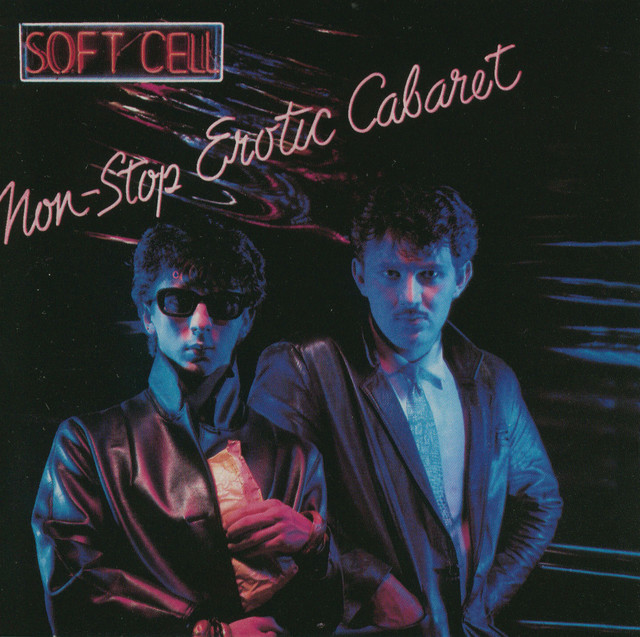 Soft Cell’s 1981 debut album Non-Stop Erotic Cabaret is often overshadowed by a hit single. However, the English duo’s cover of Gloria Jones’ “Tainted Love” is a massive slice of pop perfection that absolutely deserves the adoration it’s received. But I do implore you to spend time with the rest of Non-Stop Erotic Cabaret, the greatest synth-pop album made by a band who could never escape being a one-hit wonder. Closing track “Say Hello, Wave Goodbye,” alone, is an incredible, monumental ballad, while “Bedsitter” explores the dark corners of the London club scene that was prevalent in the early-1980s and was a big inspiration to Pet Shop Boys. Non-Stop Erotic Cabaret is cool as hell and slick like a wet sidewalk. Subversive and theatrical, Soft Cell have earned their place as synth-pop royalty. Together, bandmates Marc Almond and David Ball are forever immortal because of “Tainted Love.” But, here at Paste, we deem them immortal because of Non-Stop Erotic Cabaret altogether.
Soft Cell’s 1981 debut album Non-Stop Erotic Cabaret is often overshadowed by a hit single. However, the English duo’s cover of Gloria Jones’ “Tainted Love” is a massive slice of pop perfection that absolutely deserves the adoration it’s received. But I do implore you to spend time with the rest of Non-Stop Erotic Cabaret, the greatest synth-pop album made by a band who could never escape being a one-hit wonder. Closing track “Say Hello, Wave Goodbye,” alone, is an incredible, monumental ballad, while “Bedsitter” explores the dark corners of the London club scene that was prevalent in the early-1980s and was a big inspiration to Pet Shop Boys. Non-Stop Erotic Cabaret is cool as hell and slick like a wet sidewalk. Subversive and theatrical, Soft Cell have earned their place as synth-pop royalty. Together, bandmates Marc Almond and David Ball are forever immortal because of “Tainted Love.” But, here at Paste, we deem them immortal because of Non-Stop Erotic Cabaret altogether. 14. Robyn: Body Talk (2010)
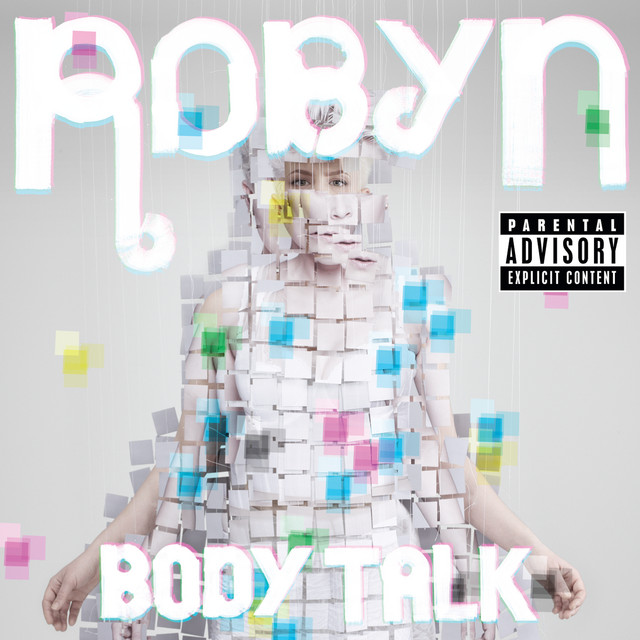 No pop singer/songwriter in the last 20 years has made as much monumental dance music as Robyn has. The Swedish singer is as close to a one-in-a-million star as anyone else on this list, but her album, Body Talk is one of the two best synth-pop projects released since Y2K. Though you might consider it to be a compilation album, it’s still a studio work that combines all of the tracks from her two-part Body Talk project—and both entries deserve some spotlight. Spearheaded by the monster single “Dancing On My Own,” it’s here, in 2010, where Robyn found her own immortality. Pulling influence from Prince’s Dirty Mind, the Knife’s Silent Shout and Kate Bush’s The Kick Inside, she made a dance record that is still, 13 years later, a club fixture. “Fembot,” “Dancehall Queen” and “Hang with Me” are each perfect on their own accord and help propel Body Talk into the echelons of electronic music forever.
No pop singer/songwriter in the last 20 years has made as much monumental dance music as Robyn has. The Swedish singer is as close to a one-in-a-million star as anyone else on this list, but her album, Body Talk is one of the two best synth-pop projects released since Y2K. Though you might consider it to be a compilation album, it’s still a studio work that combines all of the tracks from her two-part Body Talk project—and both entries deserve some spotlight. Spearheaded by the monster single “Dancing On My Own,” it’s here, in 2010, where Robyn found her own immortality. Pulling influence from Prince’s Dirty Mind, the Knife’s Silent Shout and Kate Bush’s The Kick Inside, she made a dance record that is still, 13 years later, a club fixture. “Fembot,” “Dancehall Queen” and “Hang with Me” are each perfect on their own accord and help propel Body Talk into the echelons of electronic music forever. 13. Gary Numan: The Pleasure Principle (1979)
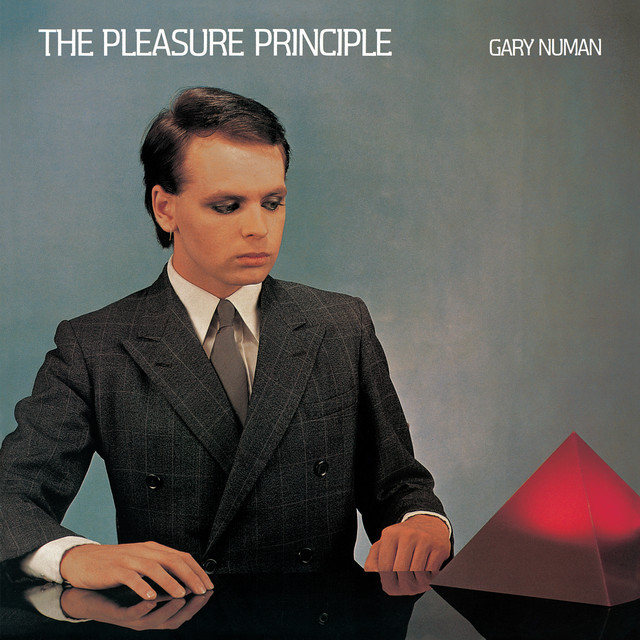 Maybe you consider Gary Numan’s debut solo album as a new wave classic, and that’s fine—but The Pleasure Principle is, without a doubt, a synth-pop masterpiece. It’s one of those projects where the synthesizers are challenged by the glittering, robotic percussion in ways that change what depths a synth-pop album can possibly venture into. “Cars” will always be the standout track, as it became a Billboard top-10 hit in 1979 and turned Numan into the kind of superstar he likely would never have become as a member of Tubeway Army. But other tracks, like “Metal” and “Airlane” and “Observer” are synthetic, cybernetic and full of flanging, phased reverb. The Pleasure Principle has the best use of a Minimoog synthesizer in its era, and it’s one of the best synth-pop records ever fashioned.
Maybe you consider Gary Numan’s debut solo album as a new wave classic, and that’s fine—but The Pleasure Principle is, without a doubt, a synth-pop masterpiece. It’s one of those projects where the synthesizers are challenged by the glittering, robotic percussion in ways that change what depths a synth-pop album can possibly venture into. “Cars” will always be the standout track, as it became a Billboard top-10 hit in 1979 and turned Numan into the kind of superstar he likely would never have become as a member of Tubeway Army. But other tracks, like “Metal” and “Airlane” and “Observer” are synthetic, cybernetic and full of flanging, phased reverb. The Pleasure Principle has the best use of a Minimoog synthesizer in its era, and it’s one of the best synth-pop records ever fashioned.12. Japan: Quiet Life (1979)
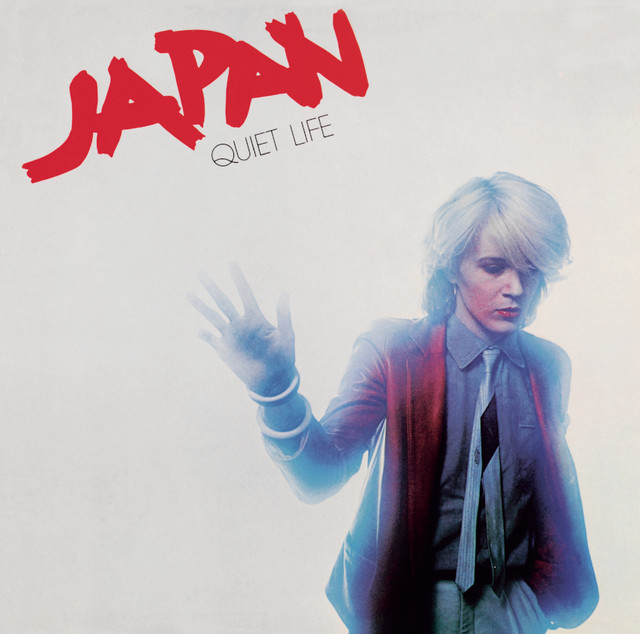 Despite their name, Japan were an English new wave band formed in Catford in the mid-1970s. They’d cut their teeth on some art- and prog-pop releases before really finding their stride in 1979 on Quiet Life. Titans of the UK’s New Romantic scene, Japan spun an androgynous aesthetic into a full-fledged electronic movement. Quiet Life is a revelation in that sense, as it combines glam-rock and synth-pop in masterful ways. Frontman David Sylvian is to thank for much of that, as his larger-than-life leadership helped turn Quiet Life into one of the greatest synth-pop records of all-time. It’s one of the key projects from the early electronic movement in the UK, and it’s just a terrific synthesizer record all the way down to the bone. From the title track to a cover of the Velvet Underground’s “All Tomorrow’s Parties,” Quiet Life ascends to unfathomable, experimental heights. Only a band like Japan could’ve made this record, and they hit the mark with buoyant, wondrous flying colors.
Despite their name, Japan were an English new wave band formed in Catford in the mid-1970s. They’d cut their teeth on some art- and prog-pop releases before really finding their stride in 1979 on Quiet Life. Titans of the UK’s New Romantic scene, Japan spun an androgynous aesthetic into a full-fledged electronic movement. Quiet Life is a revelation in that sense, as it combines glam-rock and synth-pop in masterful ways. Frontman David Sylvian is to thank for much of that, as his larger-than-life leadership helped turn Quiet Life into one of the greatest synth-pop records of all-time. It’s one of the key projects from the early electronic movement in the UK, and it’s just a terrific synthesizer record all the way down to the bone. From the title track to a cover of the Velvet Underground’s “All Tomorrow’s Parties,” Quiet Life ascends to unfathomable, experimental heights. Only a band like Japan could’ve made this record, and they hit the mark with buoyant, wondrous flying colors. 11. Yazoo: Upstairs at Eric’s (1982)
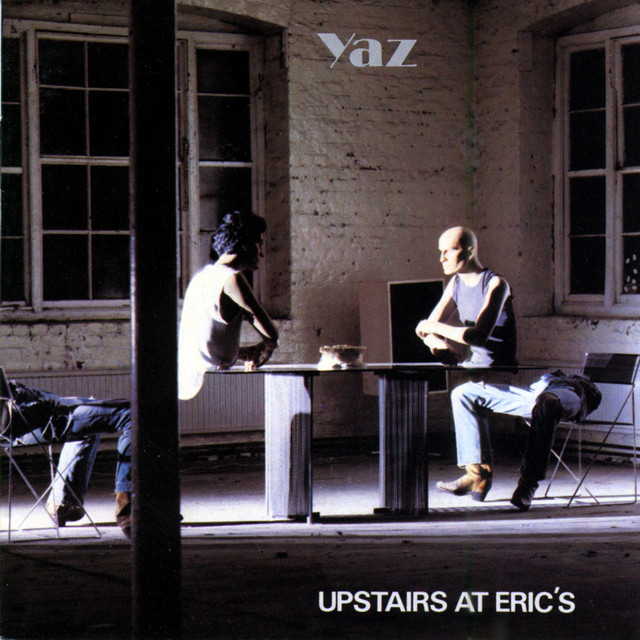 You might know them as simply Yaz, but English duo Yazoo made some of the most primitive electronic music in the early-1980s. Formed by Depeche Mode and Erasure co-founder Vince Clarke and vocalist Alison Moyet, Yazoo—despite only making two albums together—became one of the most important and formative synth-pop bands in the sub-genre’s history. Their debut record, Upstairs at Eric’s, is a brilliant, 11-track collection of accessible, proto-techno gems. Songs like “Don’t Go” and “Only You” are, maybe, the most clear-eyed formulations of experimental pop. Equally as accessible as they are eclectic, Yazoo formed an enigmatic and unparalleled chemistry—and it’s a shame we didn’t get more from them, though Clarke continues to tour with Erasure and Moyet has her own active solo career. Upstairs at Eric’s is a truly sharp, genius effort made at Blackwing, the same studio space where Clarke had made Depeche Mode’s debut album Speak & Spell the year prior.
You might know them as simply Yaz, but English duo Yazoo made some of the most primitive electronic music in the early-1980s. Formed by Depeche Mode and Erasure co-founder Vince Clarke and vocalist Alison Moyet, Yazoo—despite only making two albums together—became one of the most important and formative synth-pop bands in the sub-genre’s history. Their debut record, Upstairs at Eric’s, is a brilliant, 11-track collection of accessible, proto-techno gems. Songs like “Don’t Go” and “Only You” are, maybe, the most clear-eyed formulations of experimental pop. Equally as accessible as they are eclectic, Yazoo formed an enigmatic and unparalleled chemistry—and it’s a shame we didn’t get more from them, though Clarke continues to tour with Erasure and Moyet has her own active solo career. Upstairs at Eric’s is a truly sharp, genius effort made at Blackwing, the same studio space where Clarke had made Depeche Mode’s debut album Speak & Spell the year prior. 10. Pet Shop Boys: Actually (1987)
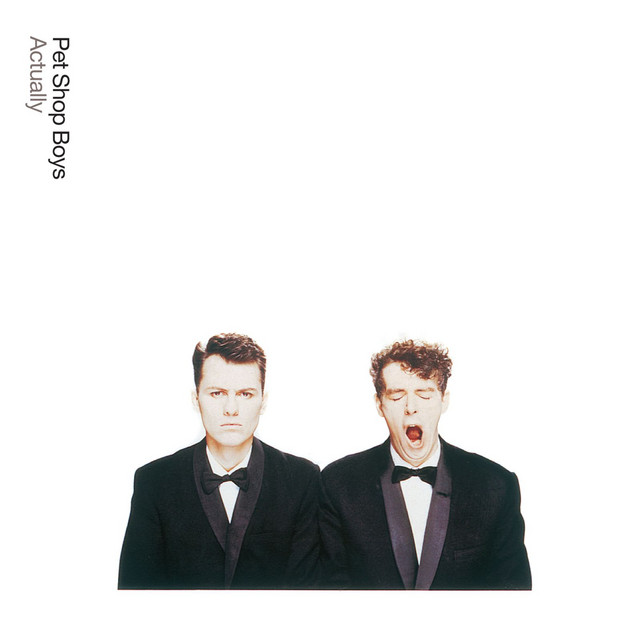
It came down to this or Please, but I opted to pick the album that has some critiques of Thatcherism on it. The English synth-pop practitioners Pet Shop Boys went absolutely bonkers mad on their sophomore album Actually. I revisit this one more than Please (though “West End Girls” is always in the rotation), because it feels like a fuller project. Songs like “It’s a Sin” and “Once More Chance” are eternal pop bangers, and even “Shopping” found a home on an episode of Disney’s greatest show, Lizzie McGuire. Pet Shop Boys are a unique duo, because they have so much crossover appeal and still endure as such. Neil Tennant and Chris Lowe were born to make music together and, 40 years later, their destiny is still being written. But how great is Actually, actually? Well, it features “What Have I Done to Deserve This?,” a duet with Dusty Springfield—and it’s one of the four or five greatest synth-pop songs ever recorded. That’s enough reason for me.
9. Erasure: The Innocents (1988)
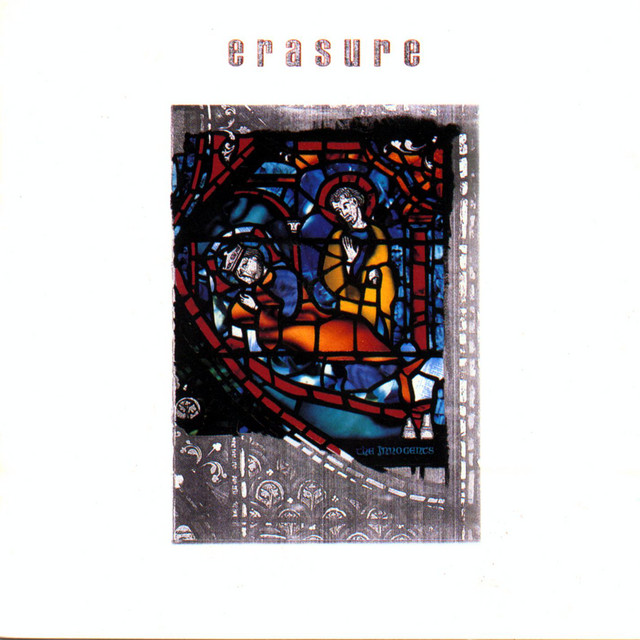 If we’ve learned anything, it’s that the best synth-pop gets made by duos—and English band Erasure are no different. Erasure was immune to failure, as it was founded by Andy Bell and Depeche Mode and Yazoo co-founder Vince Clarke. It’s almost unfair that Clarke has had a hand in bands that make up three records on this list, but we have to pay our respects to a living legend. Erasure’s second album, The Circus, gave them a commercial edge, but it was the follow-up, The Innocents, that turned them into superstars—and led to a run of #1 albums in the UK for the band. The Innocents is not just a touchstone of synth-pop, though; it’s a beloved and essential part of the queer club music canon. Few synth-pop albums kick off with such a magic foursome of songs, but “A Little Respect,” “Ship of Fools,” “Phantom Bride” and “Chains of Love” are perfect compositions that work in harmony with massive hooks and melodies to make The Innocents one of the best synth-pop albums ever made.
If we’ve learned anything, it’s that the best synth-pop gets made by duos—and English band Erasure are no different. Erasure was immune to failure, as it was founded by Andy Bell and Depeche Mode and Yazoo co-founder Vince Clarke. It’s almost unfair that Clarke has had a hand in bands that make up three records on this list, but we have to pay our respects to a living legend. Erasure’s second album, The Circus, gave them a commercial edge, but it was the follow-up, The Innocents, that turned them into superstars—and led to a run of #1 albums in the UK for the band. The Innocents is not just a touchstone of synth-pop, though; it’s a beloved and essential part of the queer club music canon. Few synth-pop albums kick off with such a magic foursome of songs, but “A Little Respect,” “Ship of Fools,” “Phantom Bride” and “Chains of Love” are perfect compositions that work in harmony with massive hooks and melodies to make The Innocents one of the best synth-pop albums ever made. 8. Chromatics: Kill for Love (2012)
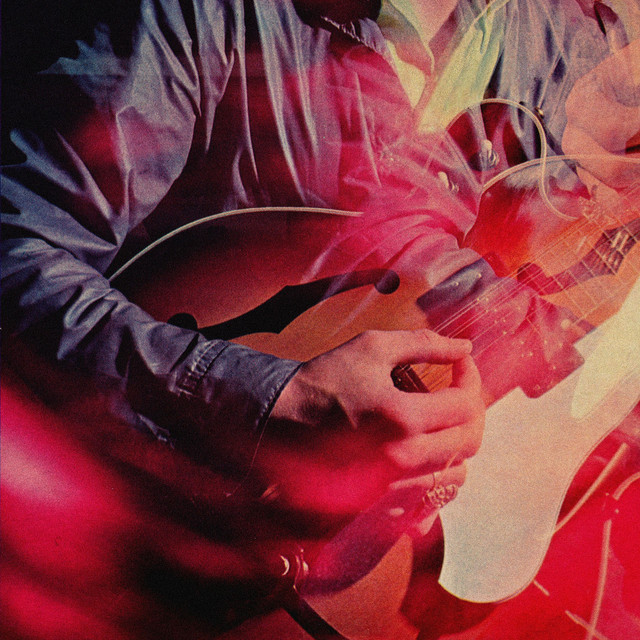 The only 21st-century album to make the top-10, Chromatics’ 2012 album Kill for Love is a perfect rendering of what a modern synth-pop album can—and should—be. A boastful, meticulous project that delivers adoring, striking electronic songs, Kill for Love is a magical entry from one of this century’s greatest bands. In ways that perfectly blend synth-pop and rock ‘n’ roll, Chromatics deliver a full-bodied, dynamic and ambitious concerto of distortion, echoes and haunt-pop. Songs like “These Streets Will Never Look the Same,” “Candy” and “Broken Mirrors” shape an ambient, brooding and relentless soundscape of electronic grandeur. Kill for Love took the momentum of 2007’s Night Drive and turned it into a vehicle with the gas pedal taped to the floor. The band would make one more album together—Closer to Grey—in 2019 before calling it quits, but Chromatics live on infinitely through Kill for Love—a contemporary masterpiece as high-scaled and epic as any record of the last 20 years.
The only 21st-century album to make the top-10, Chromatics’ 2012 album Kill for Love is a perfect rendering of what a modern synth-pop album can—and should—be. A boastful, meticulous project that delivers adoring, striking electronic songs, Kill for Love is a magical entry from one of this century’s greatest bands. In ways that perfectly blend synth-pop and rock ‘n’ roll, Chromatics deliver a full-bodied, dynamic and ambitious concerto of distortion, echoes and haunt-pop. Songs like “These Streets Will Never Look the Same,” “Candy” and “Broken Mirrors” shape an ambient, brooding and relentless soundscape of electronic grandeur. Kill for Love took the momentum of 2007’s Night Drive and turned it into a vehicle with the gas pedal taped to the floor. The band would make one more album together—Closer to Grey—in 2019 before calling it quits, but Chromatics live on infinitely through Kill for Love—a contemporary masterpiece as high-scaled and epic as any record of the last 20 years. 7. New Order: Power, Corruption & Lies (1983)
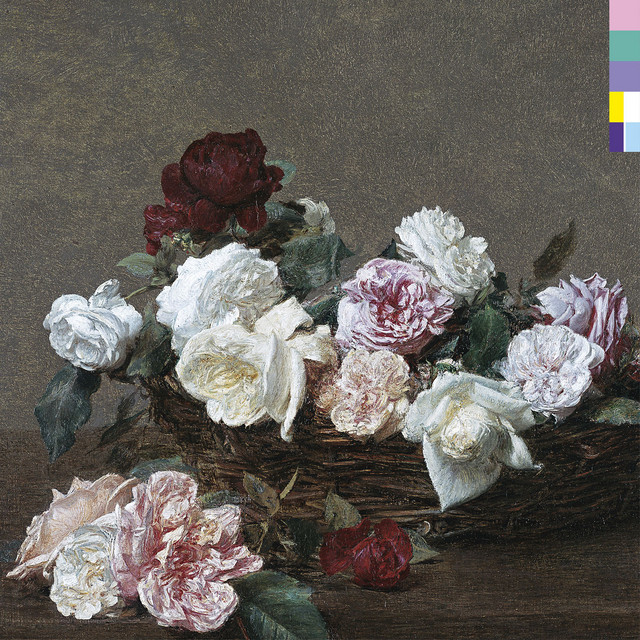 From the ashes of Joy Division came New Order, the Salford quartet who elected to continue making music together after Ian Curtis passed away in 1980. Their debut album Movement was an opening chapter that pulled no punches, but it was its successor that solidified New Order as all-time greats. Released in 1983, Power, Corruption & Lies was, at the time, the heaviest the band had ever flirted with electronica. The popularity of “Blue Monday” that same year put New Order into the stratosphere, but Power, Corruption & Lies was a gentle portrait of ambient, post-industrial tenderness. Songs like “Your Silent Face,” “We All Stand” and “Ecstasy” are timeless, but it’s the enduring greatness of “Age of Consent” that continues to stand out 40 years later. That opening bassline from Peter Hook is one of epic, instantly recognizable proportion. It was here that Bernard Sumner became one of England’s greatest frontmen, while Gillian Gilbert and Stephen Morris’ use of synthesizers cemented New Order as larger-than-life electronic heroes.
From the ashes of Joy Division came New Order, the Salford quartet who elected to continue making music together after Ian Curtis passed away in 1980. Their debut album Movement was an opening chapter that pulled no punches, but it was its successor that solidified New Order as all-time greats. Released in 1983, Power, Corruption & Lies was, at the time, the heaviest the band had ever flirted with electronica. The popularity of “Blue Monday” that same year put New Order into the stratosphere, but Power, Corruption & Lies was a gentle portrait of ambient, post-industrial tenderness. Songs like “Your Silent Face,” “We All Stand” and “Ecstasy” are timeless, but it’s the enduring greatness of “Age of Consent” that continues to stand out 40 years later. That opening bassline from Peter Hook is one of epic, instantly recognizable proportion. It was here that Bernard Sumner became one of England’s greatest frontmen, while Gillian Gilbert and Stephen Morris’ use of synthesizers cemented New Order as larger-than-life electronic heroes. 6. Yellow Magic Orchestra: Solid State Survivor (1979)

Led by Haruomi Hosono, Japanese electronic titans Yellow Magic Orchestra struck gold on their sophomore album, Solid State Survivor, in 1979. A pioneering feat in synth-pop, the project has been lauded as one of the godfathers of techno music. The album’s centerpiece, “Behind the Mask,” was so legendary that Michael Jackson intended to cover it for Thriller in 1982—but Jackson and lyricist Chris Mosdell couldn’t come to an agreement on royalties. “Rydeen” and “Technopolis” are monolithic, electronic benchmarks that run circles around 95% of the synth-pop that was being made at the time—and you can feel Hosono’s imprint all over Solid State Survivor. Tapping into the album is like taking a time machine to a mecca of arenas built with dashing, gauzy, glamorous walls of relentlessly crystalline noise. Yellow Magic Orchestra would attempt to recapture that magic on Multiplies and BGM, but nothing can touch the perfection of Solid State Survivor.
5. Orchestral Manoeuvres in the Dark: Architecture & Morality (1981)
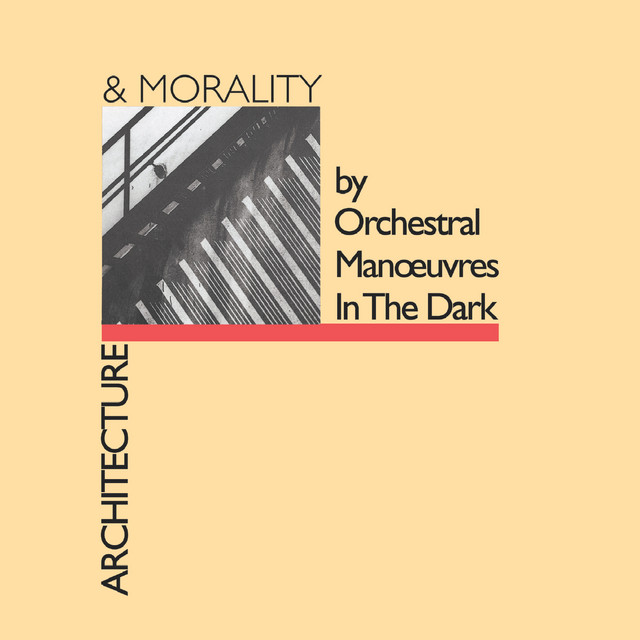 If the rules were different, Orchestral Manoeuvres in the Dark would have quite a few records on this list. Albums like Organisation and Crush are equally worthy, but it’s their 1981 record Architecture & Morality that rises through the noise as their all-time best. OMD is one of those bands who made their finest album before blowing up, and re-visiting Architecture & Morality—with the context of knowing that their Top-5 hit “If You Leave” wouldn’t arrive for another five years—is a real delight. It’s like tapping into brilliance before the rest of the world caught up to it. Still, Architecture & Morality sold 4-million copies and spawned three international hits—so how far away from the zeitgeist was OMD, really? “Souvenir” is one of the best synth-pop songs ever written, while “Joan of Arc” and “Maid of Orleans” are pretty damn close behind. Architecture & Morality is one of those records that’s capitalized heavily off of retrospect, but its place in synth-pop history was earned and has only grown in the 42 years since its release.
If the rules were different, Orchestral Manoeuvres in the Dark would have quite a few records on this list. Albums like Organisation and Crush are equally worthy, but it’s their 1981 record Architecture & Morality that rises through the noise as their all-time best. OMD is one of those bands who made their finest album before blowing up, and re-visiting Architecture & Morality—with the context of knowing that their Top-5 hit “If You Leave” wouldn’t arrive for another five years—is a real delight. It’s like tapping into brilliance before the rest of the world caught up to it. Still, Architecture & Morality sold 4-million copies and spawned three international hits—so how far away from the zeitgeist was OMD, really? “Souvenir” is one of the best synth-pop songs ever written, while “Joan of Arc” and “Maid of Orleans” are pretty damn close behind. Architecture & Morality is one of those records that’s capitalized heavily off of retrospect, but its place in synth-pop history was earned and has only grown in the 42 years since its release. 4. Depeche Mode: Violator (1990)
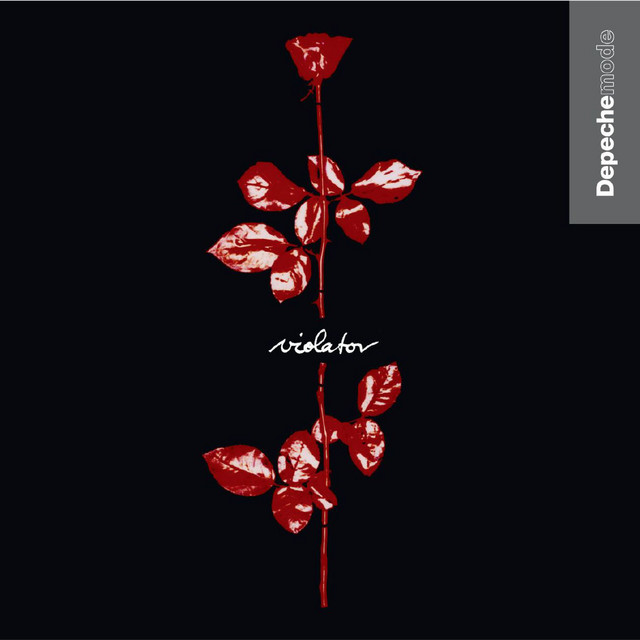 Any of Depeche Mode’s first eight studio albums could, realistically be in this spot. From Speak & Spell in 1981 to Songs of Faith and Devotion in 1993, the Essex electronic quartet were in the echelons of synth-pop, new wave and post-punk royalty. But it’s on their 1990 masterpiece Violator where they are at an apex only rivaled by a handful of artists. “Personal Jesus,” “Enjoy the Silence” and “Policy of Truth” are bigger, bolder and more anthemic than anything Depeche Mode had made up until that time. And the songs are so indebted to pop architecture that you can sometimes forget how sad and spellbinding they are down to the core. Violator sold a lot of copies and propelled the band into the icon status they still revel in today. As close to a blockbuster synth-pop album as we’ll ever see, Depeche Mode made a record accessible to everyone from aging punks to cynical teens. The tracklist is timeless, and the songs of Violator endure 30 years later.
Any of Depeche Mode’s first eight studio albums could, realistically be in this spot. From Speak & Spell in 1981 to Songs of Faith and Devotion in 1993, the Essex electronic quartet were in the echelons of synth-pop, new wave and post-punk royalty. But it’s on their 1990 masterpiece Violator where they are at an apex only rivaled by a handful of artists. “Personal Jesus,” “Enjoy the Silence” and “Policy of Truth” are bigger, bolder and more anthemic than anything Depeche Mode had made up until that time. And the songs are so indebted to pop architecture that you can sometimes forget how sad and spellbinding they are down to the core. Violator sold a lot of copies and propelled the band into the icon status they still revel in today. As close to a blockbuster synth-pop album as we’ll ever see, Depeche Mode made a record accessible to everyone from aging punks to cynical teens. The tracklist is timeless, and the songs of Violator endure 30 years later. 3. Kraftwerk: The Man-Machine (1978)
 German quartet Kraftwerk have about five albums that could’ve fit into this slot, but we’ve opted to move forward with The Man-Machine—the band’s 1978 masterpiece that is, at its core, the godfather of synth-pop as we know it. It’s here where Kraftwerk took their mechanical style of old and re-tuned it into a club-worthy aesthetic. The album is a beautiful example of early-era electro-pop architecture, and it laid the groundwork for what bands like Depeche Mode, OMD and Pet Shop Boys would aim to do in the decade that followed. Centerpiece “The Model” feels as brand-new now as it did 45 years ago, while songs like “Neon Lights,” “Metropolis” and “The Robots” all signal early installments of the cybernetic dance-pop that would flood the charts at the turn of 1981. Like always, Kraftwerk were ahead of the curve. Although, you could argue that—on The Man-Machine—they invented the curve altogether.
German quartet Kraftwerk have about five albums that could’ve fit into this slot, but we’ve opted to move forward with The Man-Machine—the band’s 1978 masterpiece that is, at its core, the godfather of synth-pop as we know it. It’s here where Kraftwerk took their mechanical style of old and re-tuned it into a club-worthy aesthetic. The album is a beautiful example of early-era electro-pop architecture, and it laid the groundwork for what bands like Depeche Mode, OMD and Pet Shop Boys would aim to do in the decade that followed. Centerpiece “The Model” feels as brand-new now as it did 45 years ago, while songs like “Neon Lights,” “Metropolis” and “The Robots” all signal early installments of the cybernetic dance-pop that would flood the charts at the turn of 1981. Like always, Kraftwerk were ahead of the curve. Although, you could argue that—on The Man-Machine—they invented the curve altogether. 2. Haruomi Hosono: Philharmony (1982)
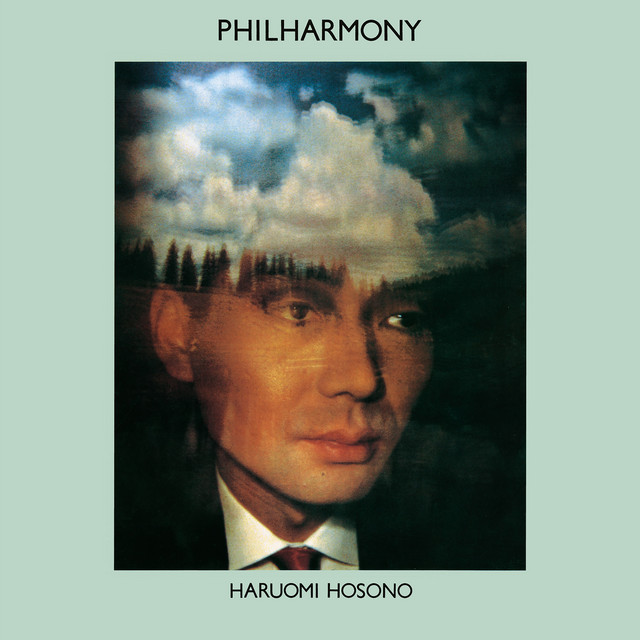 Though his 1973 debut album Hosono House has inspired everyone from Mac DeMarco to Harry Styles, Haruomi Hosono’s 1982 masterpiece Philharmony is one of the finest electronic records ever assembled. It’s a revolutionary album that came after Hosono started the band Yellow Magic Orchestra, but the work here showcases the songwriter’s singular brilliance. The godfather of city pop, Shibuya-kei and synth-pop, Hosono transcends greatness on Philharmony—and songs like “Sports Men,” “Picnic” and “Luminescent / Hotaru” are just so damn stupendous and timeless. I dare you to listen to “Sports Men” and not immediately run it back for another 10 listens immediately after. Combining ambient electronica and psychedelic, pop-coded tracks, Philharmony is untouchable and awing. Hosono would soon popularize chiptune records and set a precedent for cultural favor around video game music, but his work in 1982 on Philharmony remains some of his greatest work—and some of the best synth-pop ever made.
Though his 1973 debut album Hosono House has inspired everyone from Mac DeMarco to Harry Styles, Haruomi Hosono’s 1982 masterpiece Philharmony is one of the finest electronic records ever assembled. It’s a revolutionary album that came after Hosono started the band Yellow Magic Orchestra, but the work here showcases the songwriter’s singular brilliance. The godfather of city pop, Shibuya-kei and synth-pop, Hosono transcends greatness on Philharmony—and songs like “Sports Men,” “Picnic” and “Luminescent / Hotaru” are just so damn stupendous and timeless. I dare you to listen to “Sports Men” and not immediately run it back for another 10 listens immediately after. Combining ambient electronica and psychedelic, pop-coded tracks, Philharmony is untouchable and awing. Hosono would soon popularize chiptune records and set a precedent for cultural favor around video game music, but his work in 1982 on Philharmony remains some of his greatest work—and some of the best synth-pop ever made.1. Sparks: No. 1 in Heaven (1979)
 Ever the chameleonic band, California pop duo Sparks haven taken many shapes in their 50-year career. However, few projects stack up against their eighth record, No. 1 in Heaven. Though many of the albums on this list are masterpieces to some degree or another, this Sparks record is the one stroke of brilliance that any band or artist who wants to make synth-pop should look at first and foremost. Energized by the hit synth-disco single (and Joy Division-influencing) “The Number One Song in Heaven,” No. 1 in Heaven is a club record that combines the iconic collaboration between Giorgio Moroder and Donna Summer with their own bizarre taste. In turn, Moroder produced No. 1 in Heaven and helped transform Sparks into one of the most daring bands around. Gone were the days of their guitar-focused records that preceded their work with Moroder. They quickly adopted sequencers and synthesizers and built witty, energetic and genius songs like “Tryouts for the Human Race” and “Academy Award Performance”—both of which expanded the contemporary palette of synth-pop, a sub-genre that was only just recently getting its wings. Rivaled only by their 1982 album Angst in My Pants, No. 1 in Heaven is not just the greatest Sparks record of all-time; it’s the greatest synth-pop record ever made, with a nebula soundscape as technicolor as it is curious and era-defining.
Ever the chameleonic band, California pop duo Sparks haven taken many shapes in their 50-year career. However, few projects stack up against their eighth record, No. 1 in Heaven. Though many of the albums on this list are masterpieces to some degree or another, this Sparks record is the one stroke of brilliance that any band or artist who wants to make synth-pop should look at first and foremost. Energized by the hit synth-disco single (and Joy Division-influencing) “The Number One Song in Heaven,” No. 1 in Heaven is a club record that combines the iconic collaboration between Giorgio Moroder and Donna Summer with their own bizarre taste. In turn, Moroder produced No. 1 in Heaven and helped transform Sparks into one of the most daring bands around. Gone were the days of their guitar-focused records that preceded their work with Moroder. They quickly adopted sequencers and synthesizers and built witty, energetic and genius songs like “Tryouts for the Human Race” and “Academy Award Performance”—both of which expanded the contemporary palette of synth-pop, a sub-genre that was only just recently getting its wings. Rivaled only by their 1982 album Angst in My Pants, No. 1 in Heaven is not just the greatest Sparks record of all-time; it’s the greatest synth-pop record ever made, with a nebula soundscape as technicolor as it is curious and era-defining.Check out a playlist featuring songs from these albums below.
GET PASTE RIGHT IN YOUR INBOX
The best music, movies, TV, books, comedy and more.
- Home By Test Admin April 19, 2022 | 10:34am
- The 30 Greatest David Bowie Songs of All Time By Olivia Abercrombie February 18, 2024 | 9:00am
- New Kids Movies By Josh Jackson and Paste Staff December 19, 2023 | 1:09pm
- The 10 Best Movies in Theaters Right Now By Paste Staff February 23, 2024 | 8:30am
- The 25 Best Movies On Demand Right Now (February 2024) By Josh Jackson and Paste Staff February 2, 2024 | 2:50am
- The 35 Best Anime of All Time By Austin Jones and Paste Staff February 15, 2024 | 12:00pm
- The 40 Best Horror Movies on Amazon Prime Video Right Now (Feb. 2024) By Jim Vorel February 2, 2024 | 11:02am
- This One Is Different Because It’s Us: The Smiths at 40 By Elise Soutar February 20, 2024 | 10:00am
- The 30 Best Apple TV+ Shows, Ranked By Paste Staff February 23, 2024 | 4:00pm
- 25 Years Later, Office Space Is Still Bleakly Hilarious By C.M. Crockford February 19, 2024 | 10:00am
- More Most Popular
Editors' Picks
- Best New Albums: This Week's Records to Stream By Paste Staff February 23, 2024 | 2:00pm
- The Best Sitcoms on Netflix Right Now (February 2024) By Garrett Martin and Paste Staff February 4, 2024 | 4:30pm
- The 50 Best TV Shows on Netflix, Ranked (February 2024) By Paste Staff February 23, 2024 | 3:00pm
- 5 Burning Questions We Still Have About GLOW By Clare Martin June 5, 2023 | 3:02pm
- 9 Times Sitcom B-Plots Were Better Than the Main Storylines By Olivia Cathcart December 26, 2023 | 1:12pm
- A Love Letter to I’m Sorry and a Tribute to Funny Moms in 3 Bits By Annie Berke September 6, 2023 | 11:48am
- 10 Reasons to Love 21 Jump Street By Clare Martin June 12, 2023 | 11:50am
- An Ode to the Horniest Sitcom Parents, the Belchers and the Wilkersons By Clare Martin December 27, 2023 | 1:09pm
- The 30 Best Apple TV+ Shows, Ranked By Paste Staff February 23, 2024 | 4:00pm
- The 10 Best Bob’s Burgers Thanksgiving Episodes By Olivia Cathcart November 20, 2023 | 11:50am
© 2024 Paste Media Group. All Rights Reserved
source




